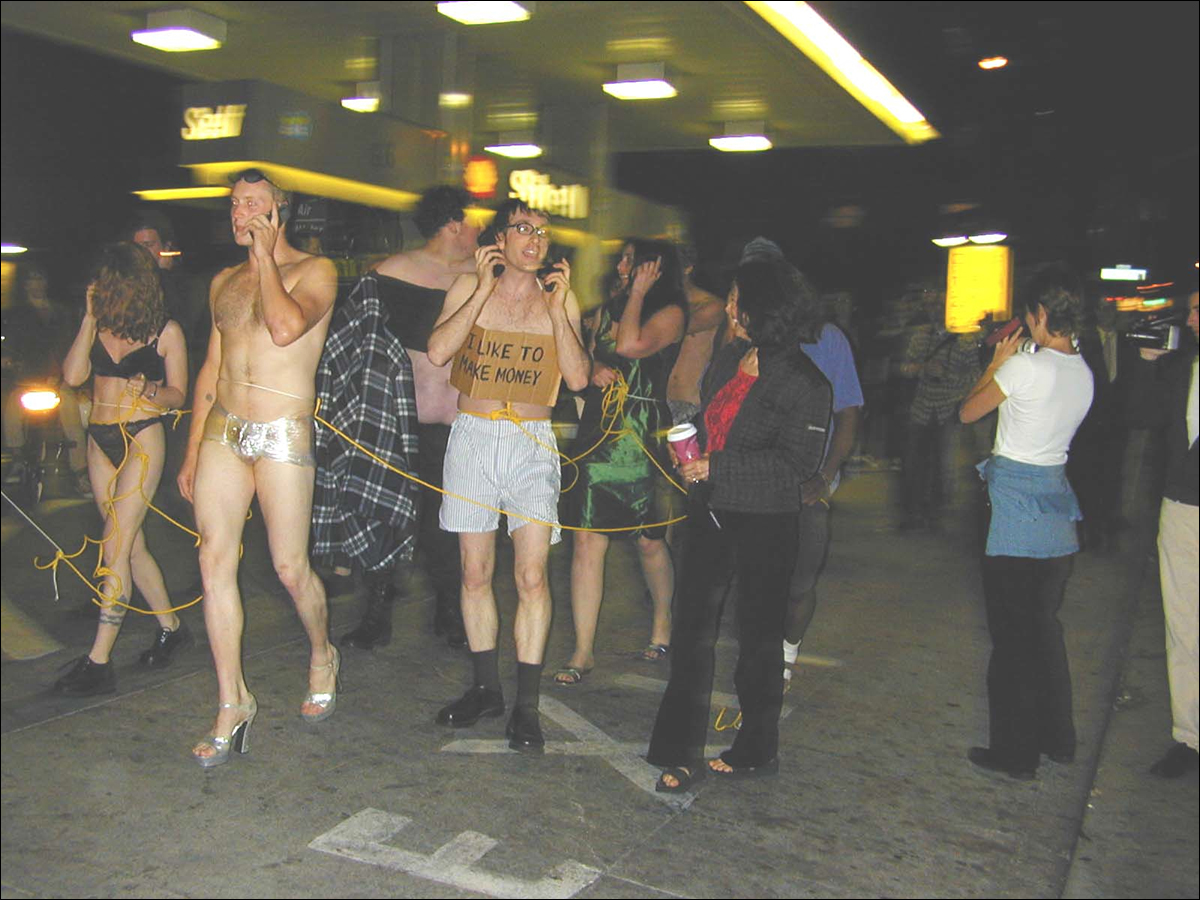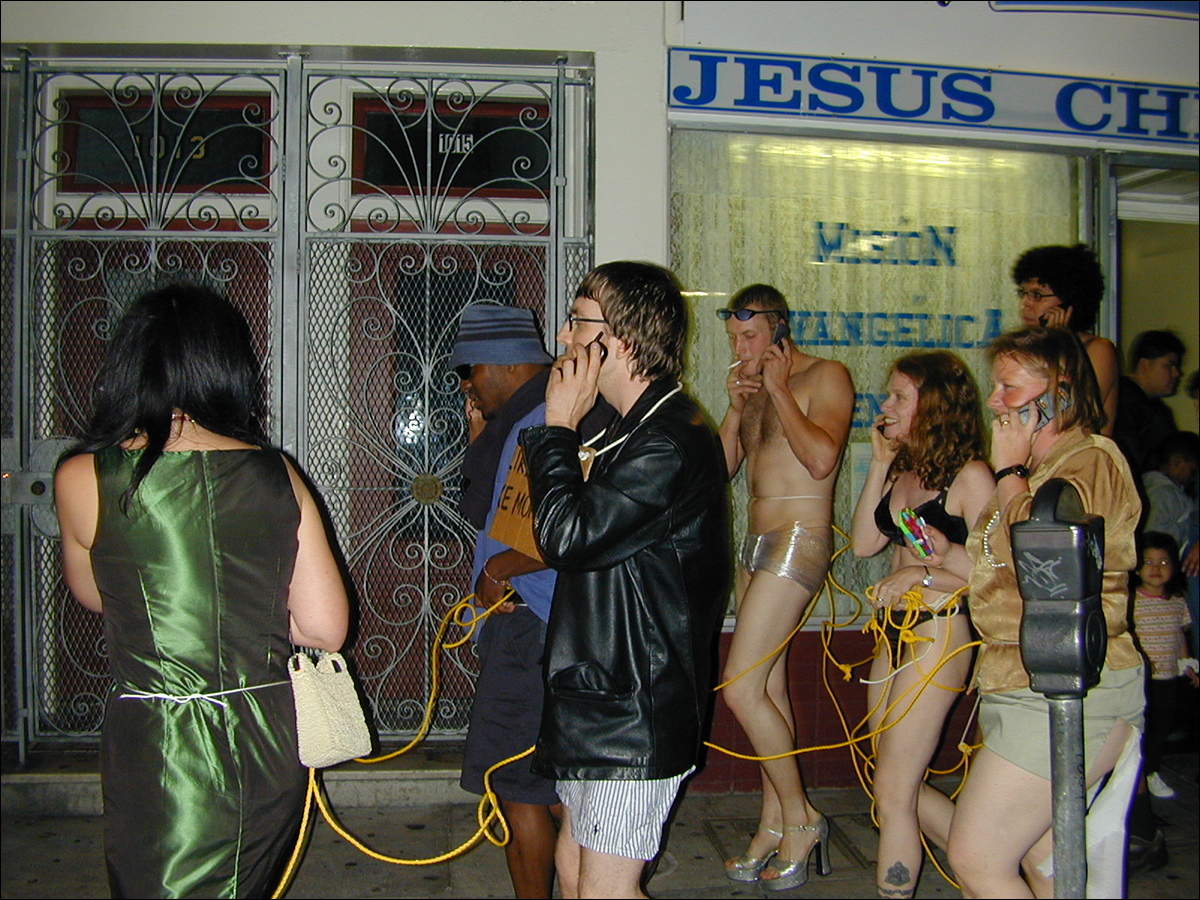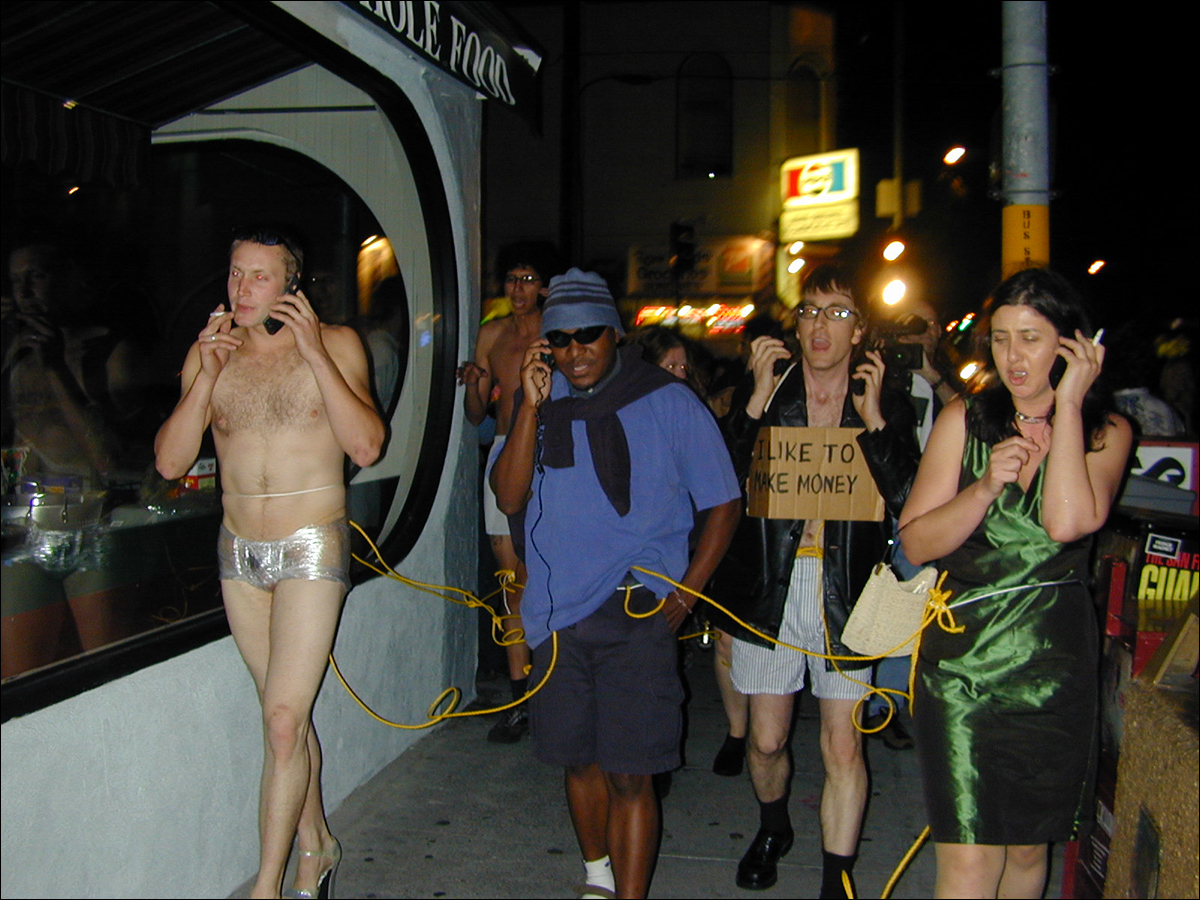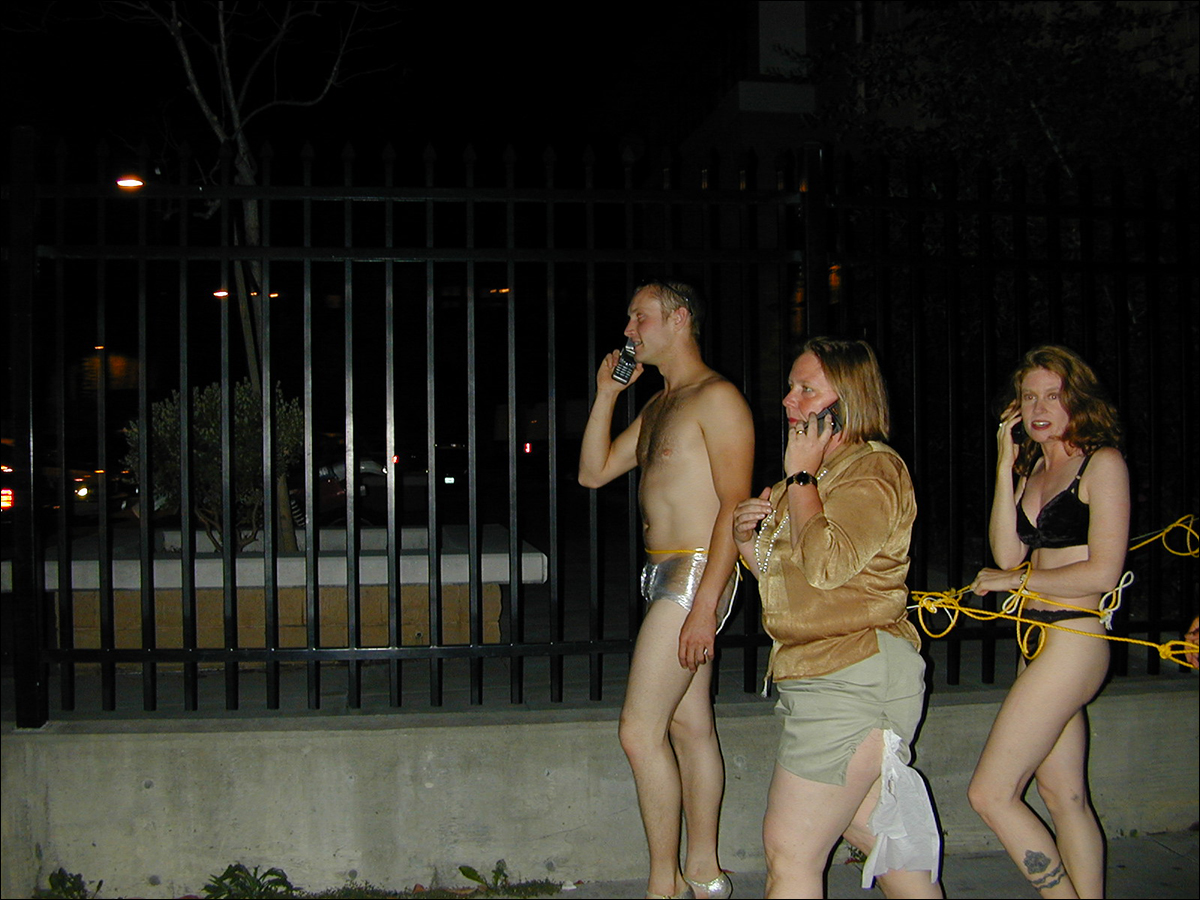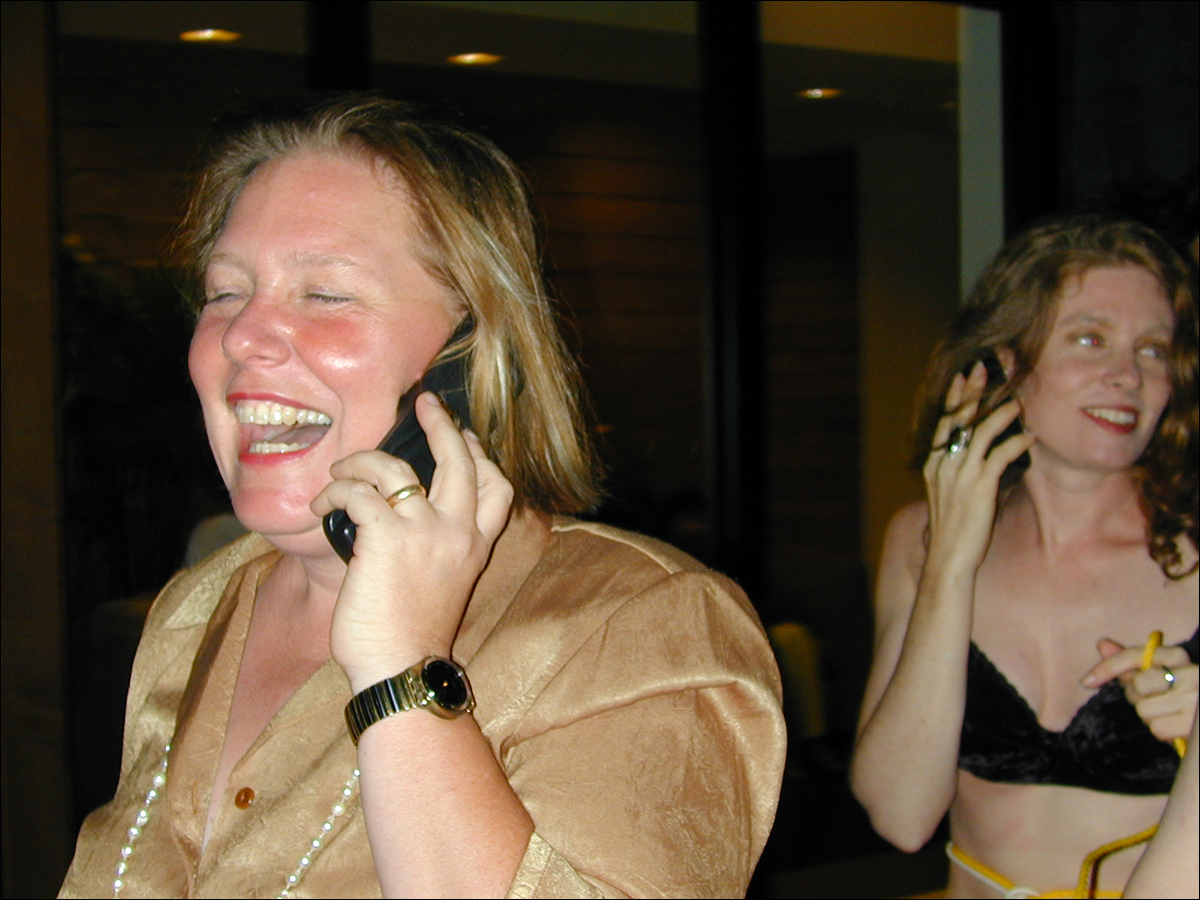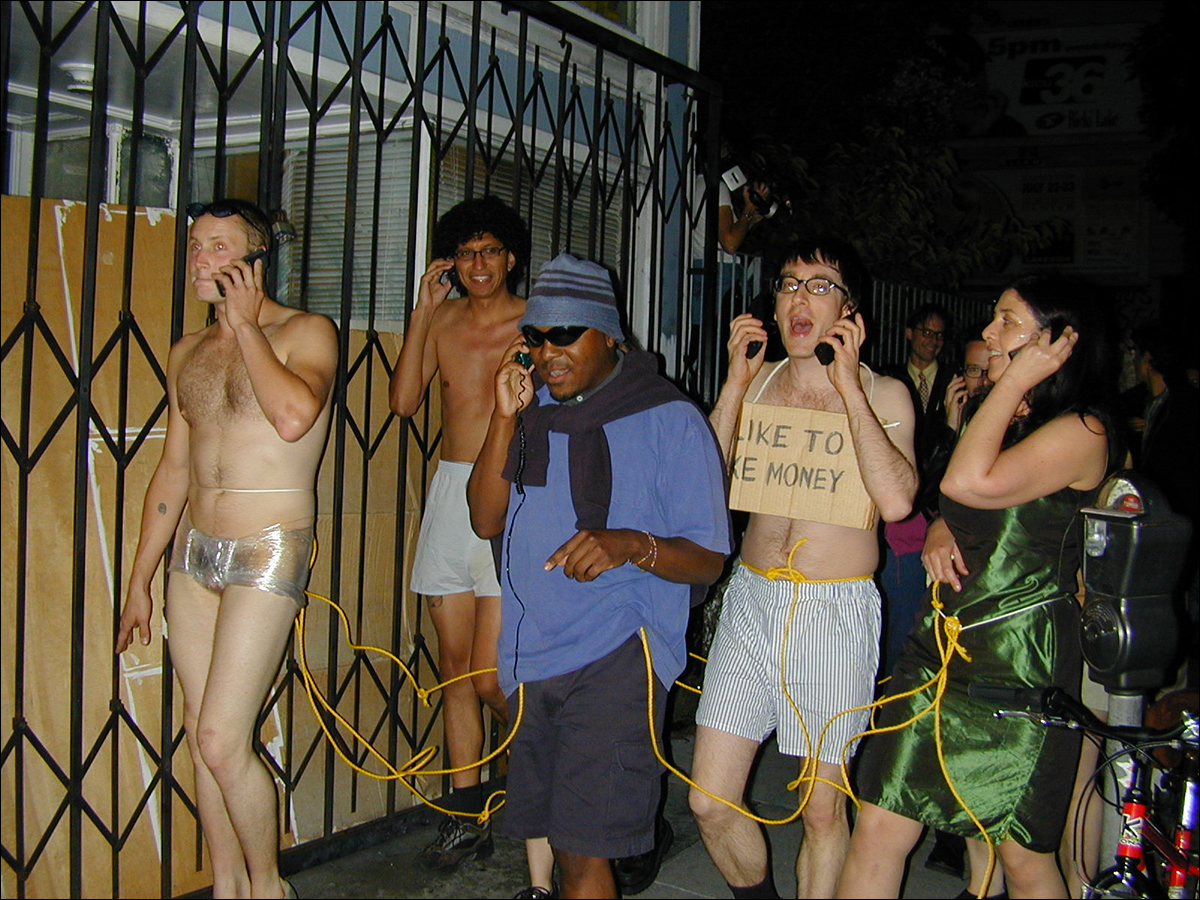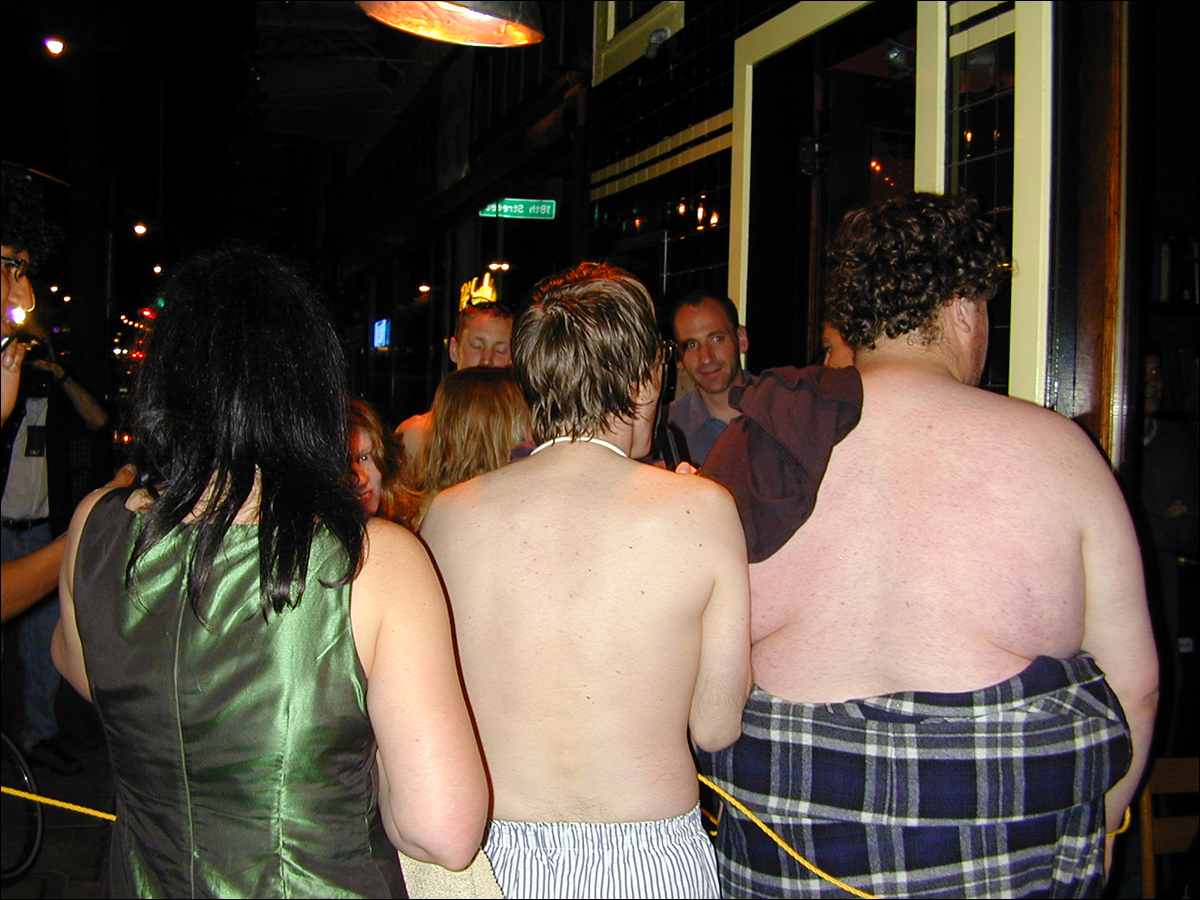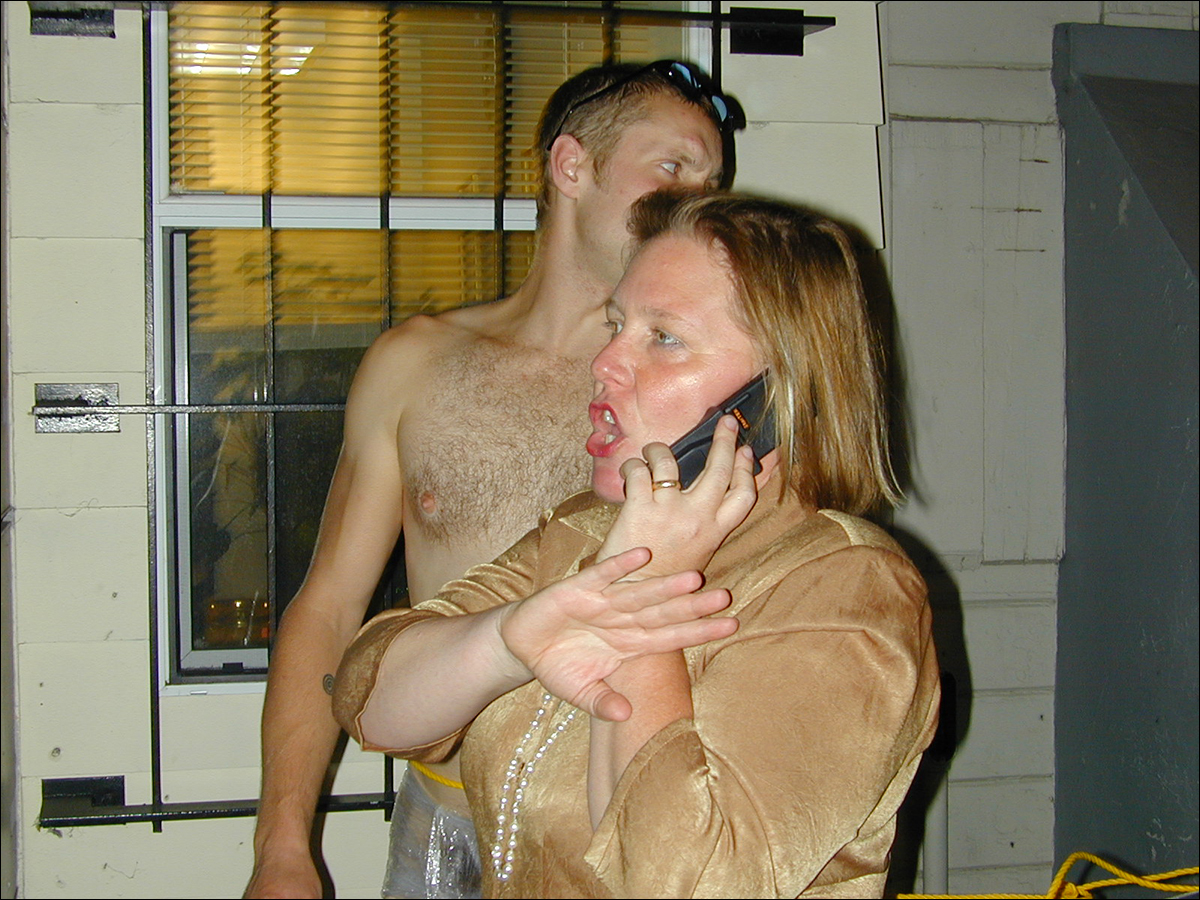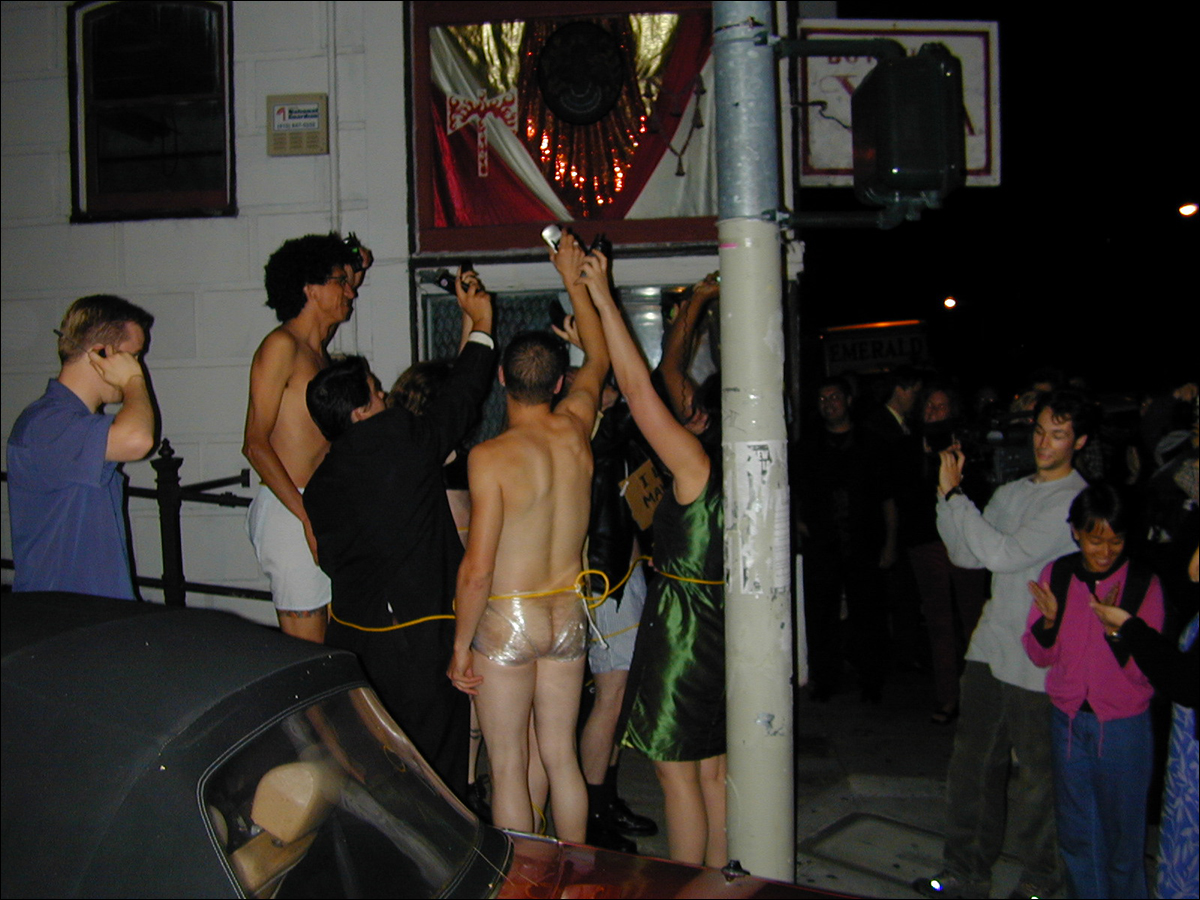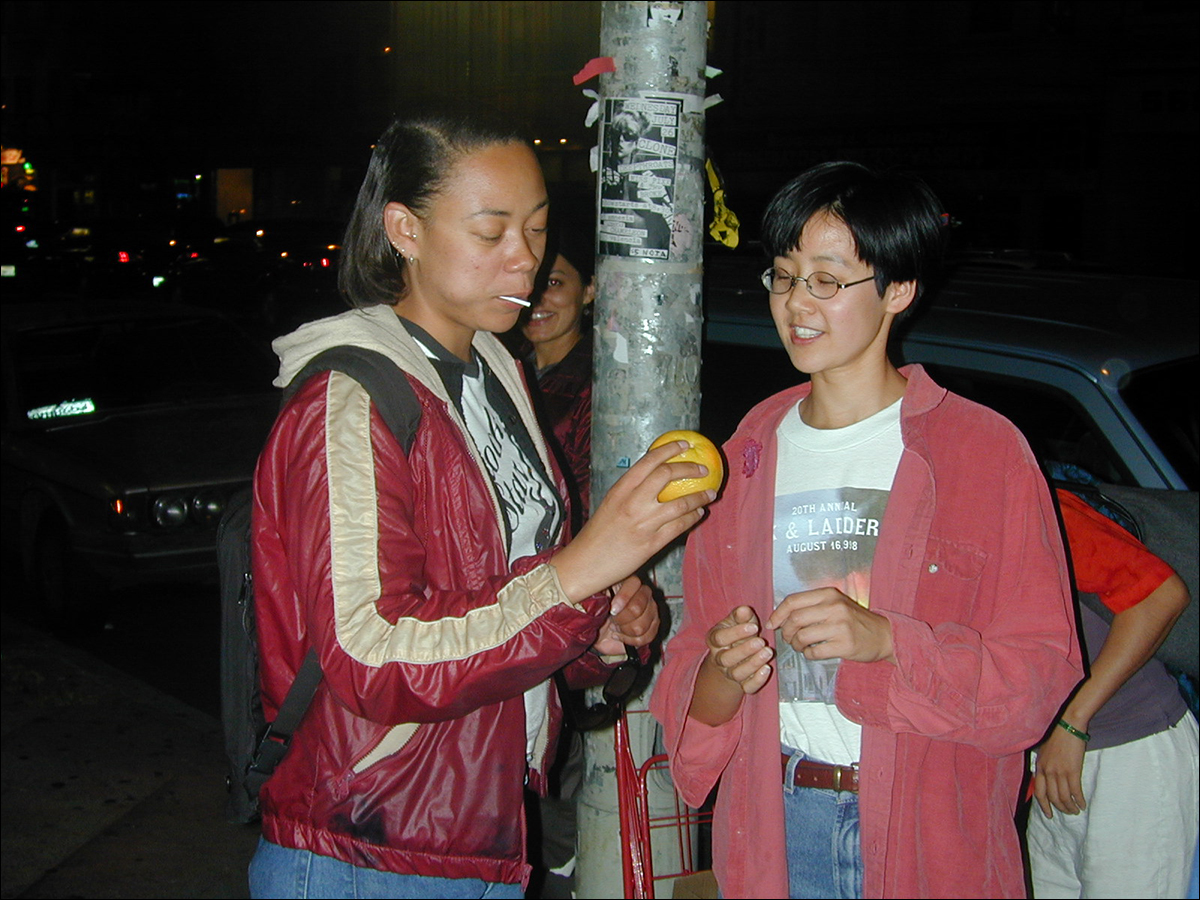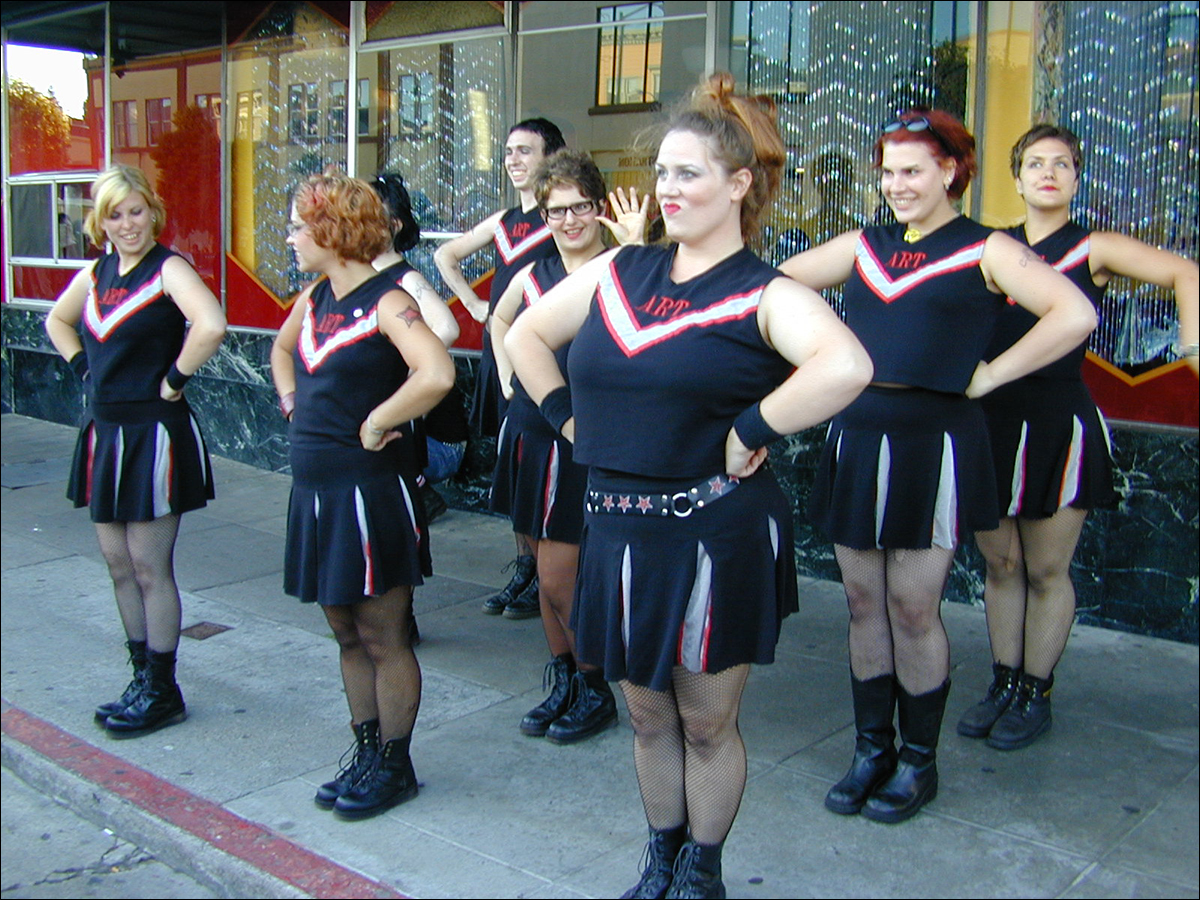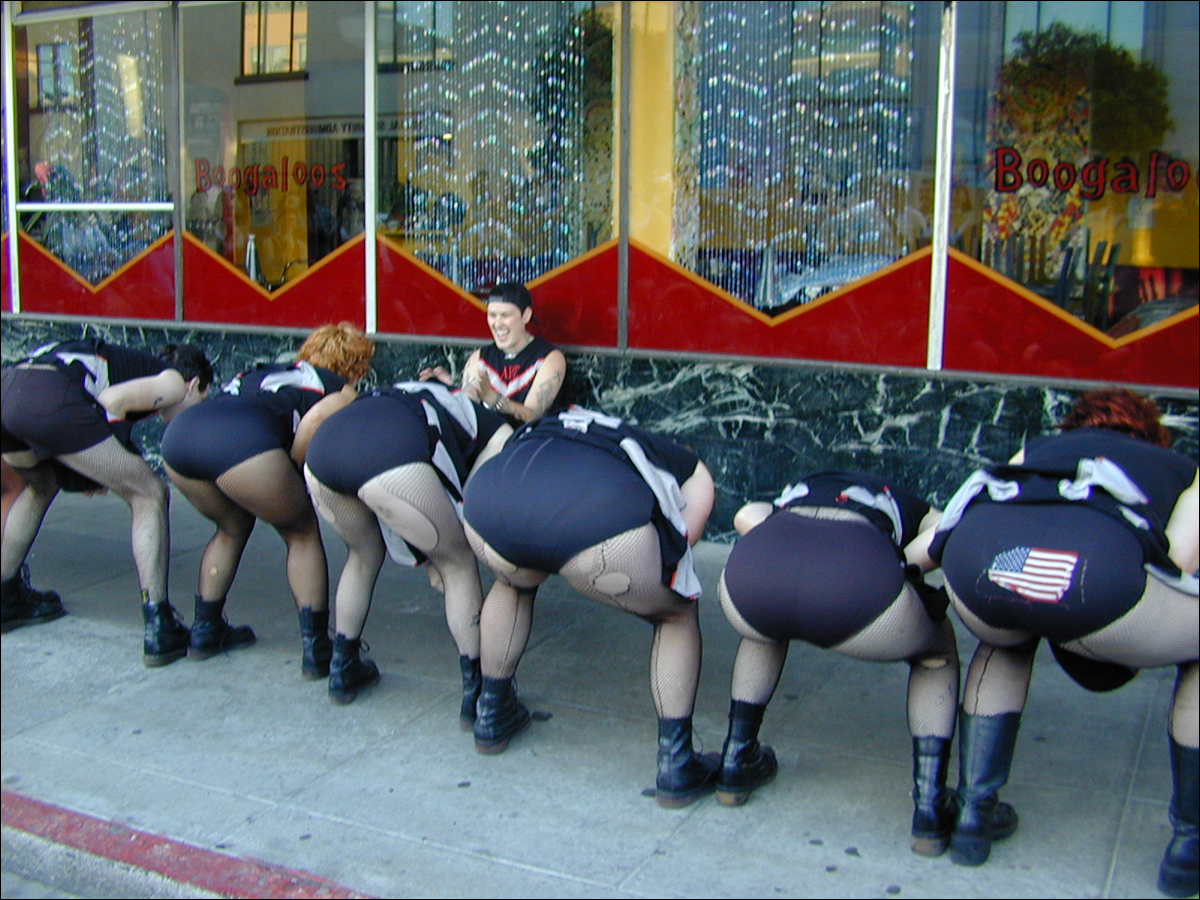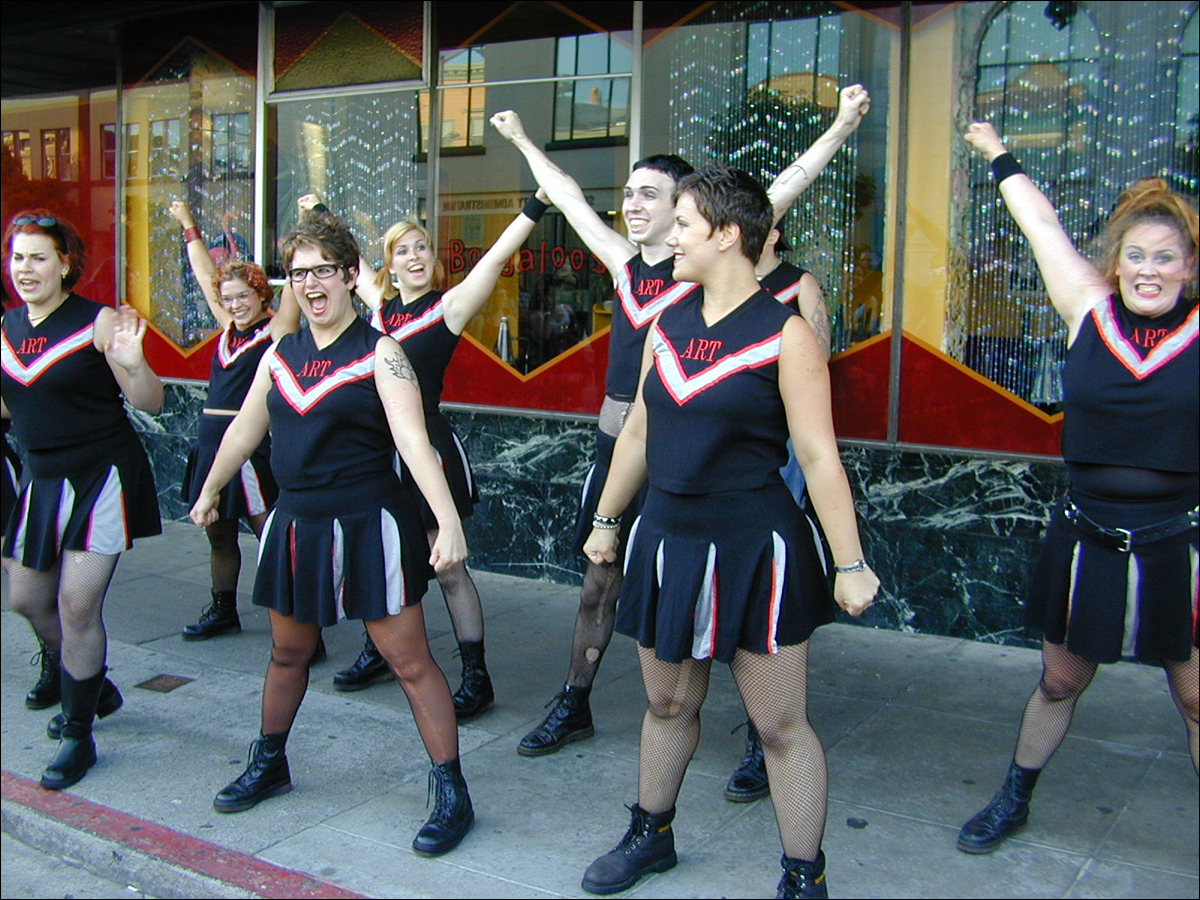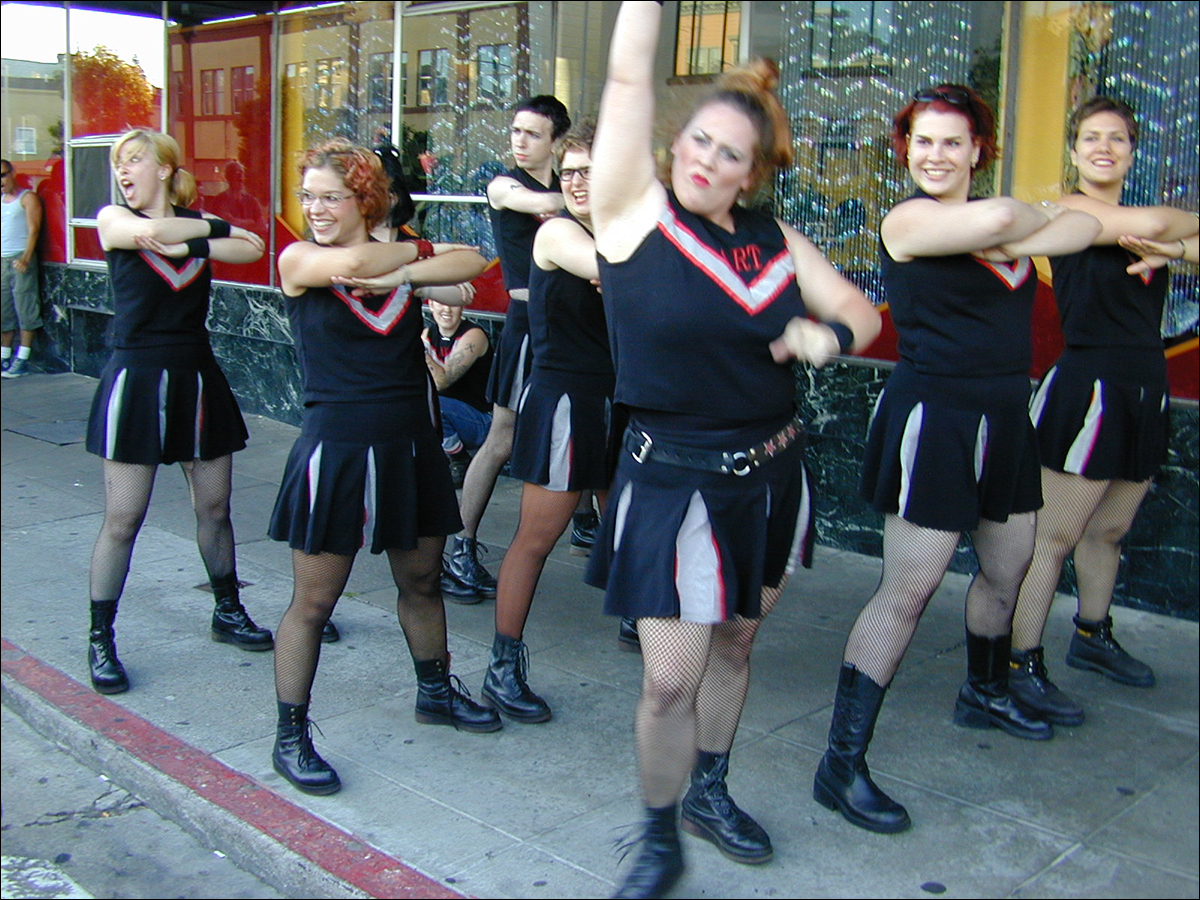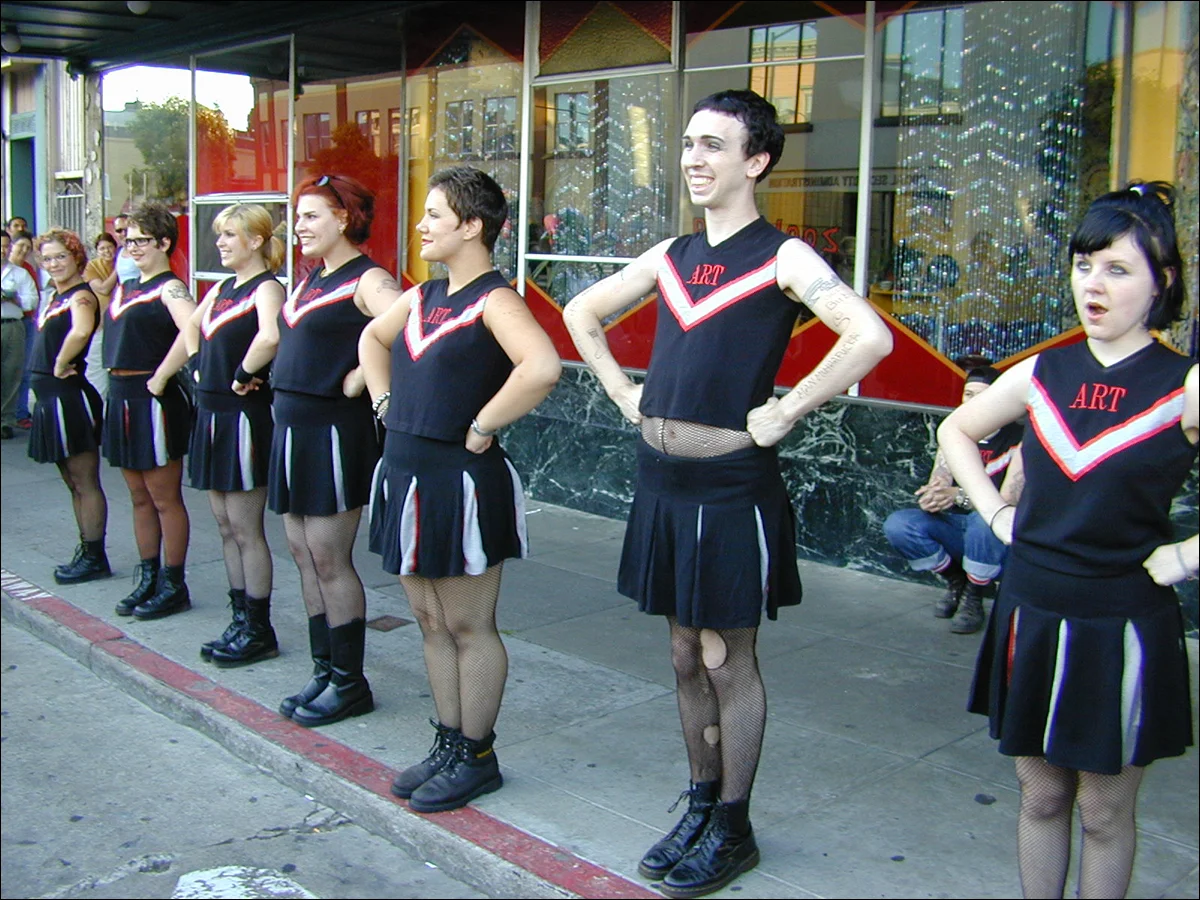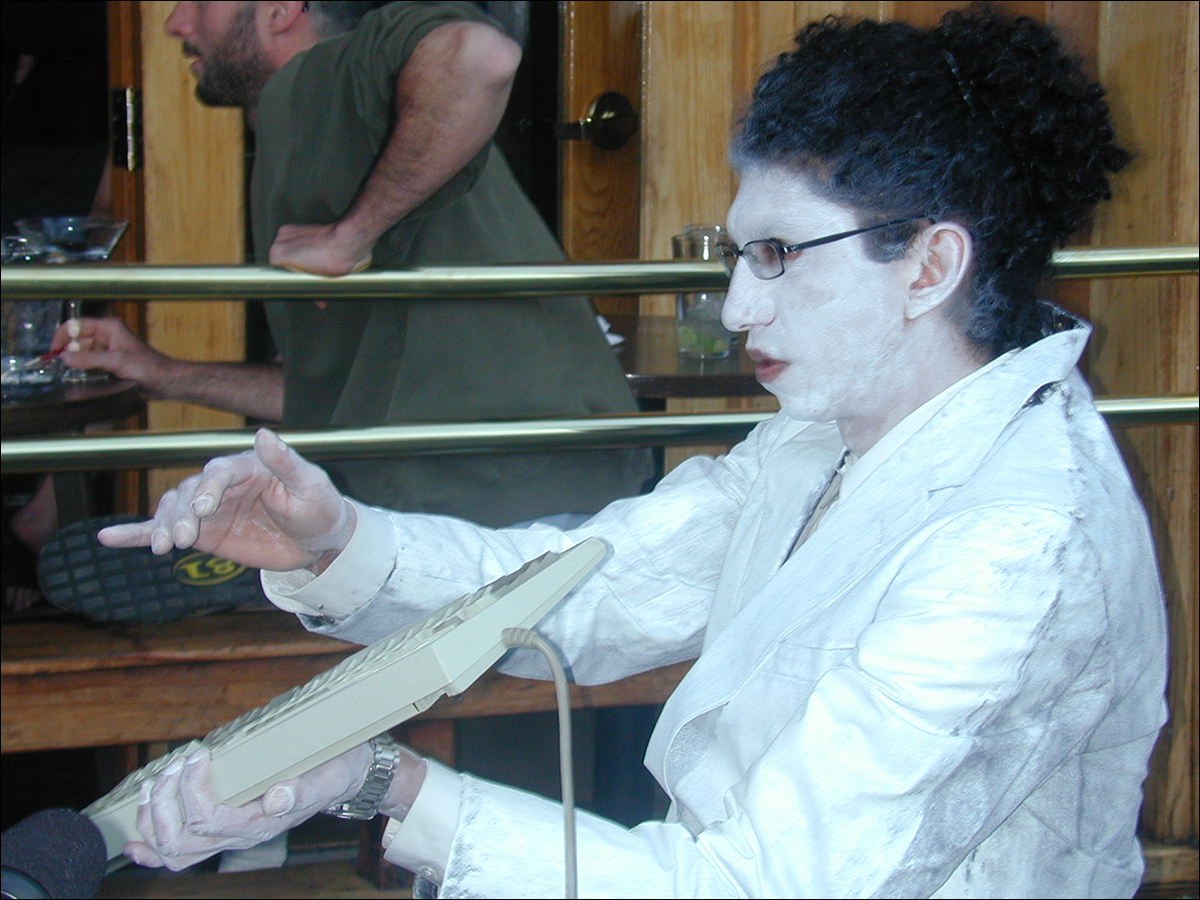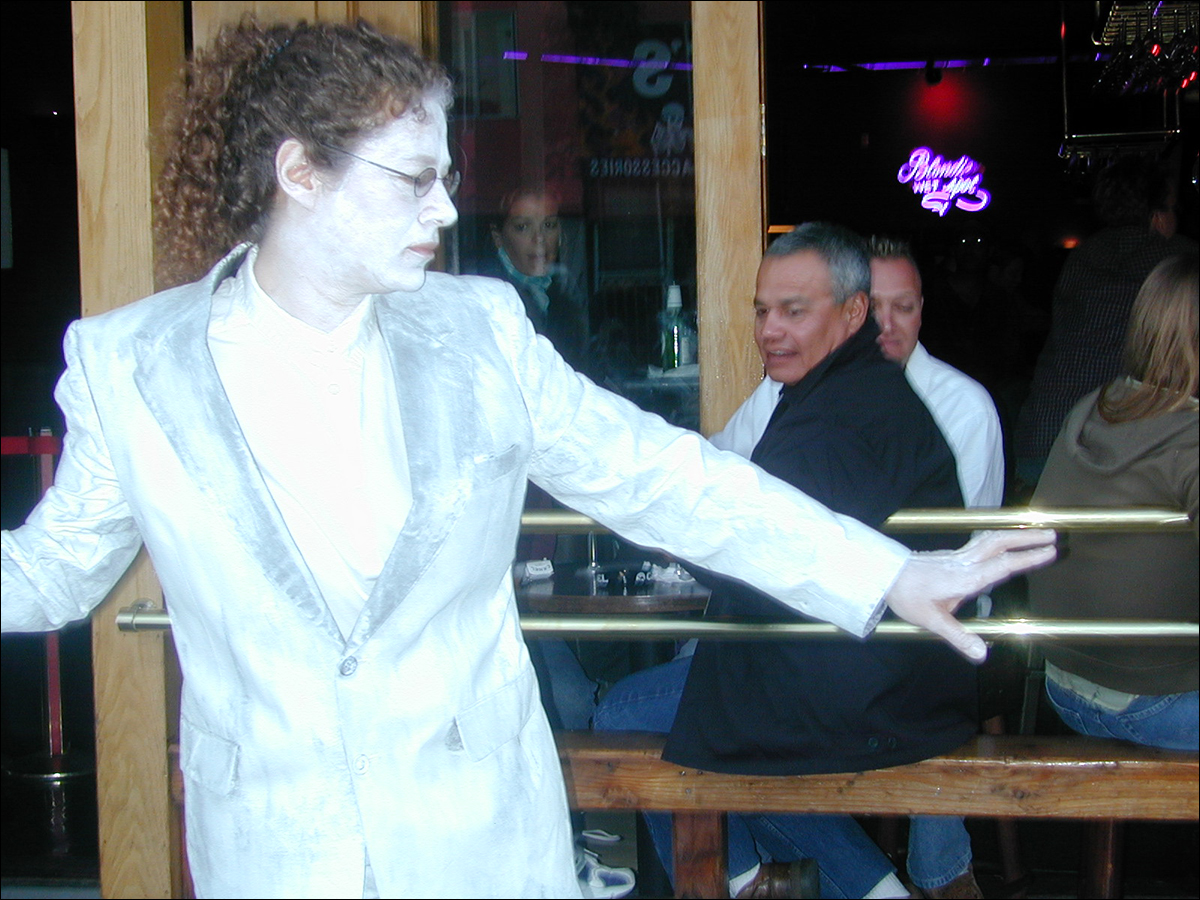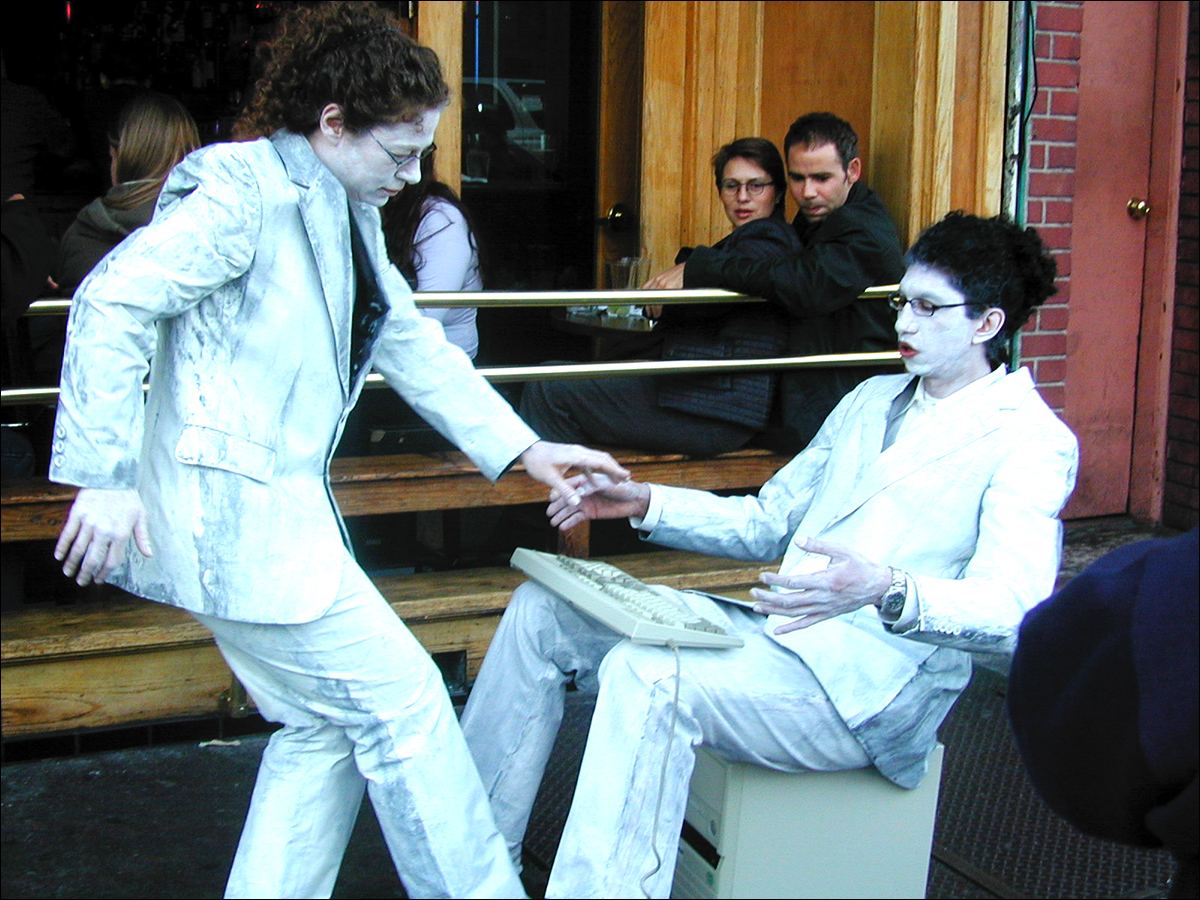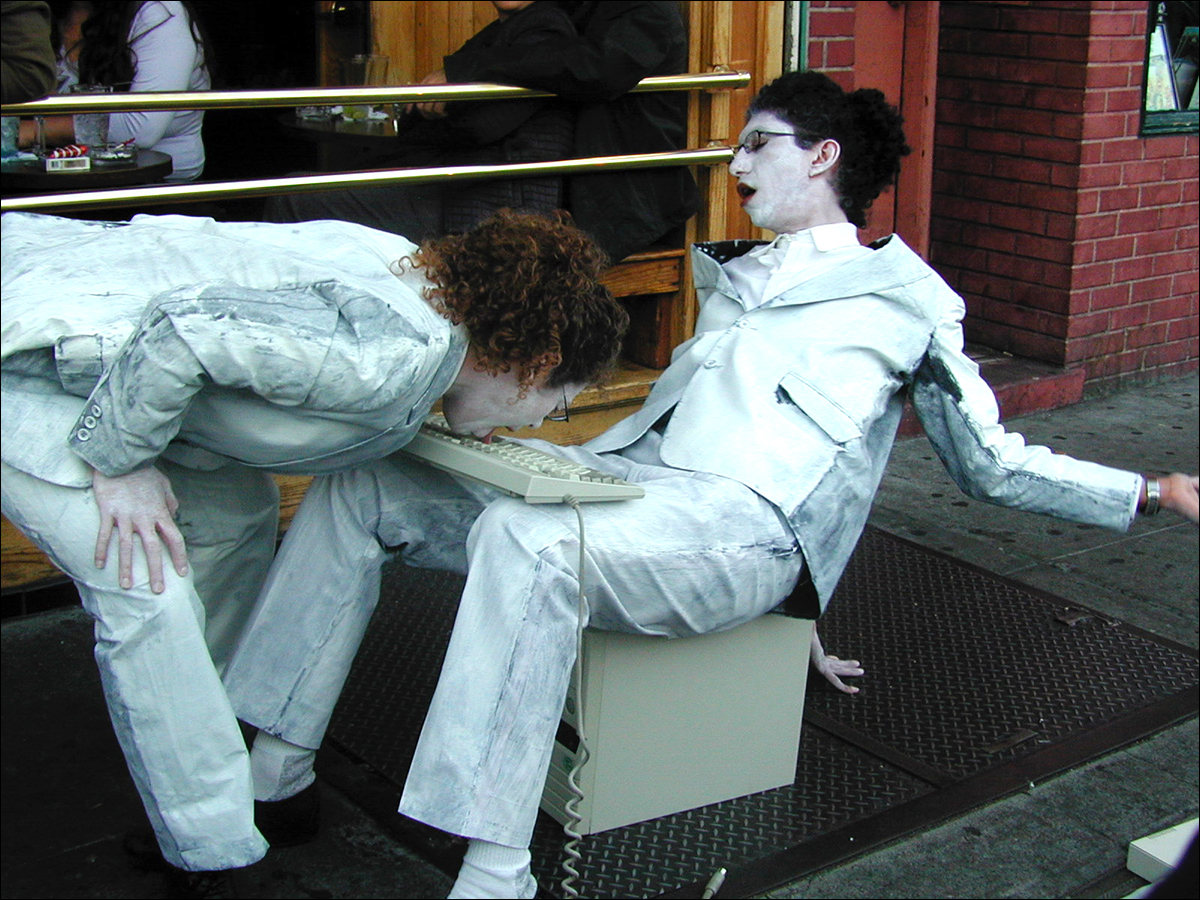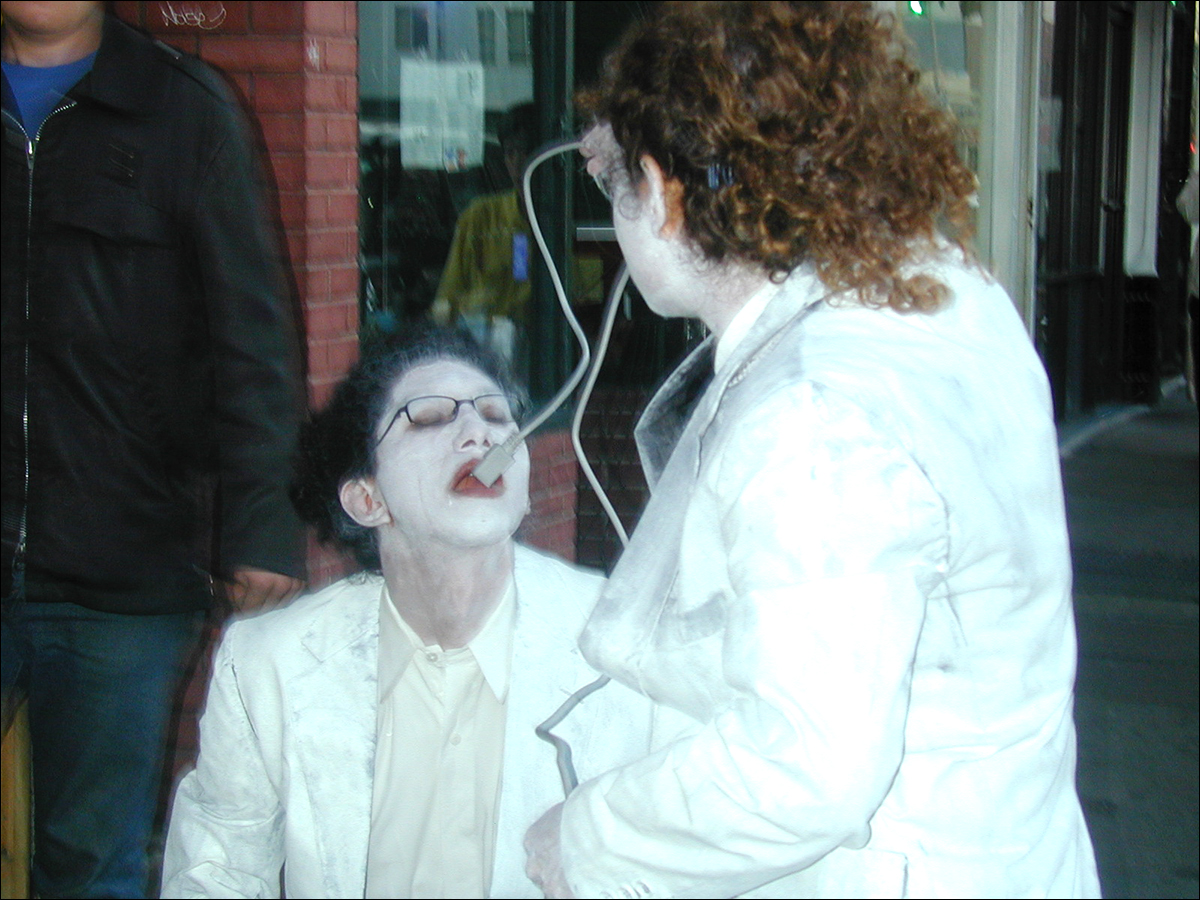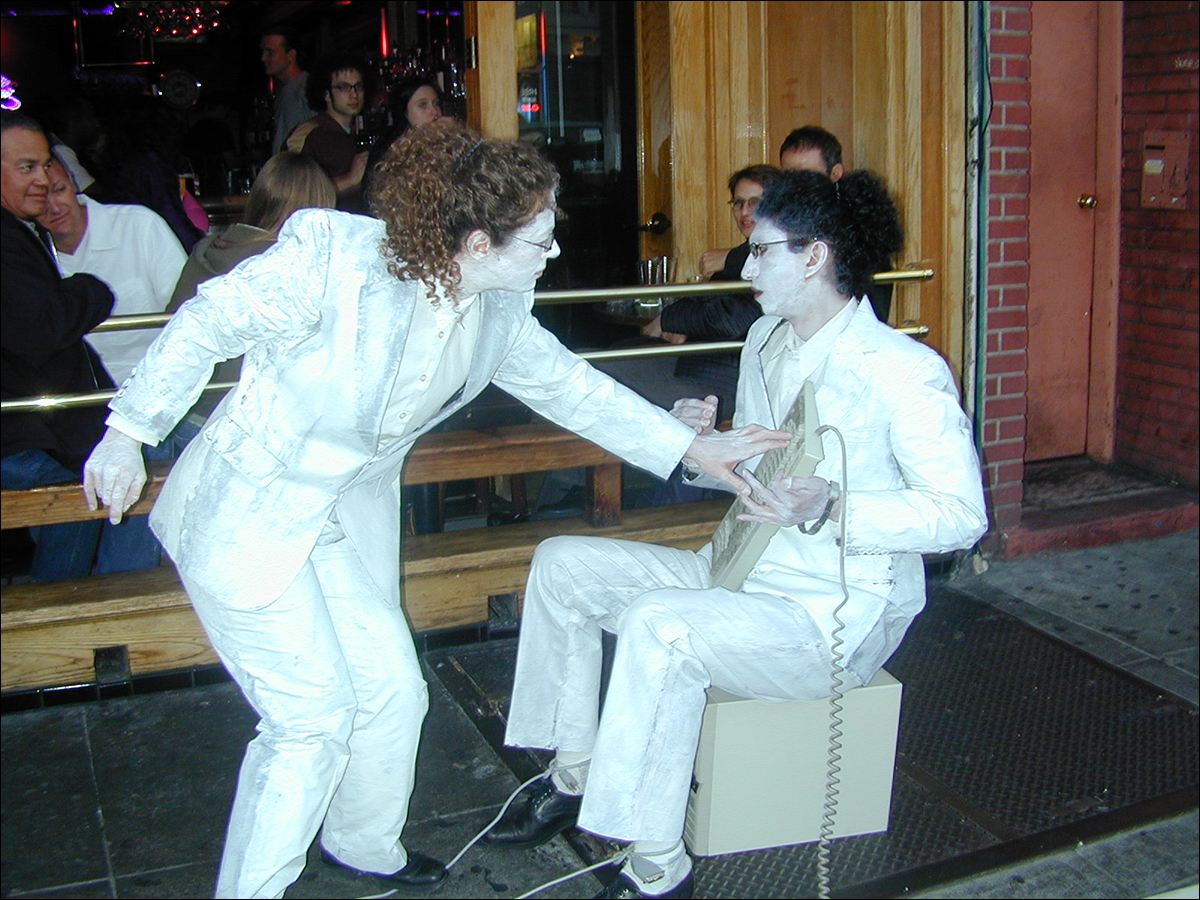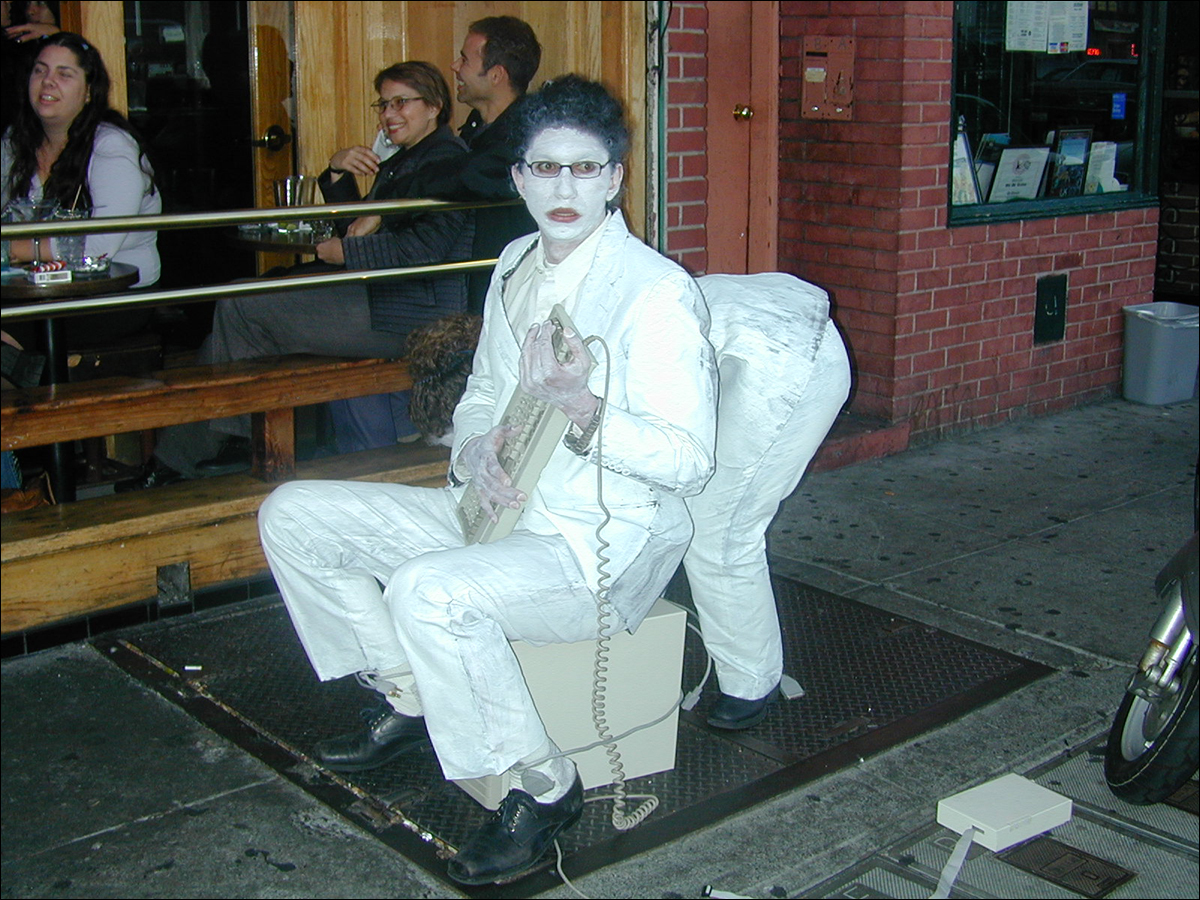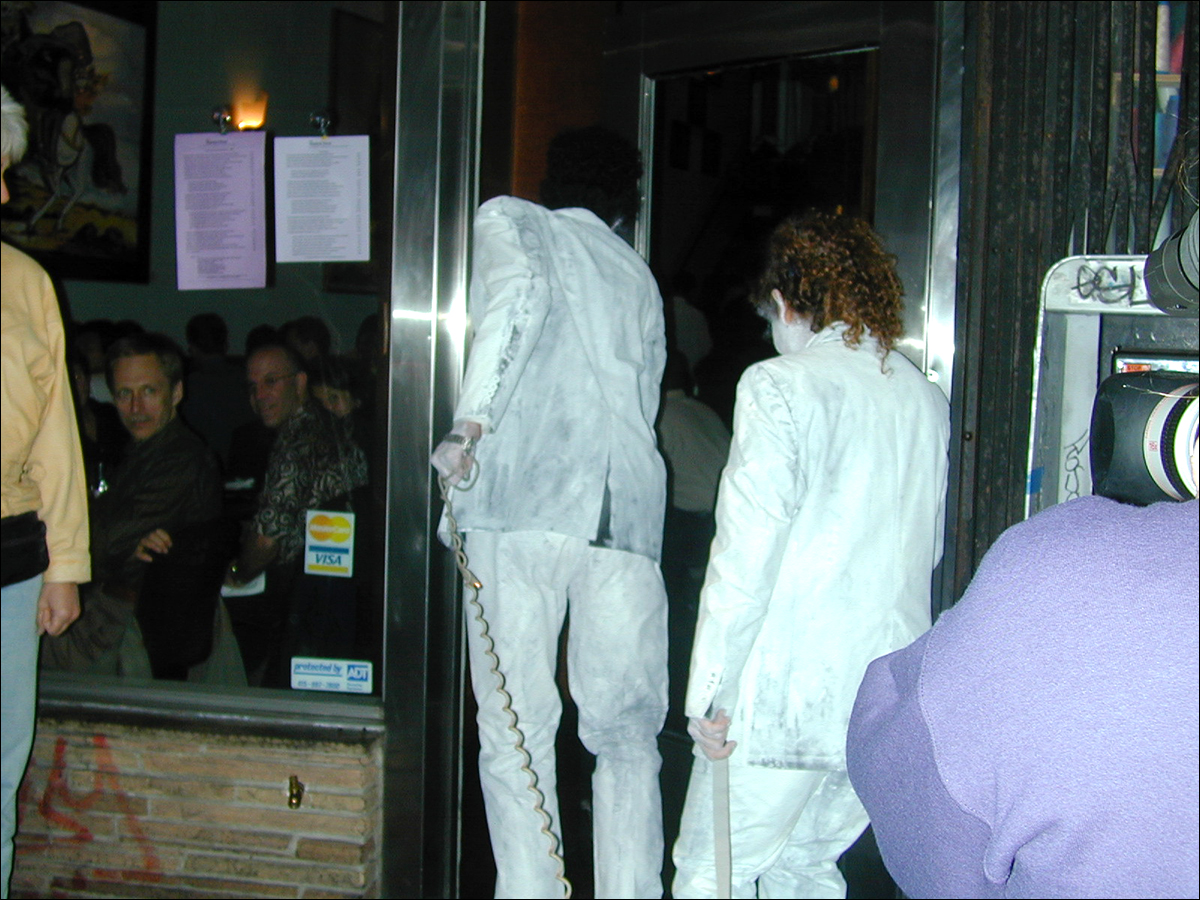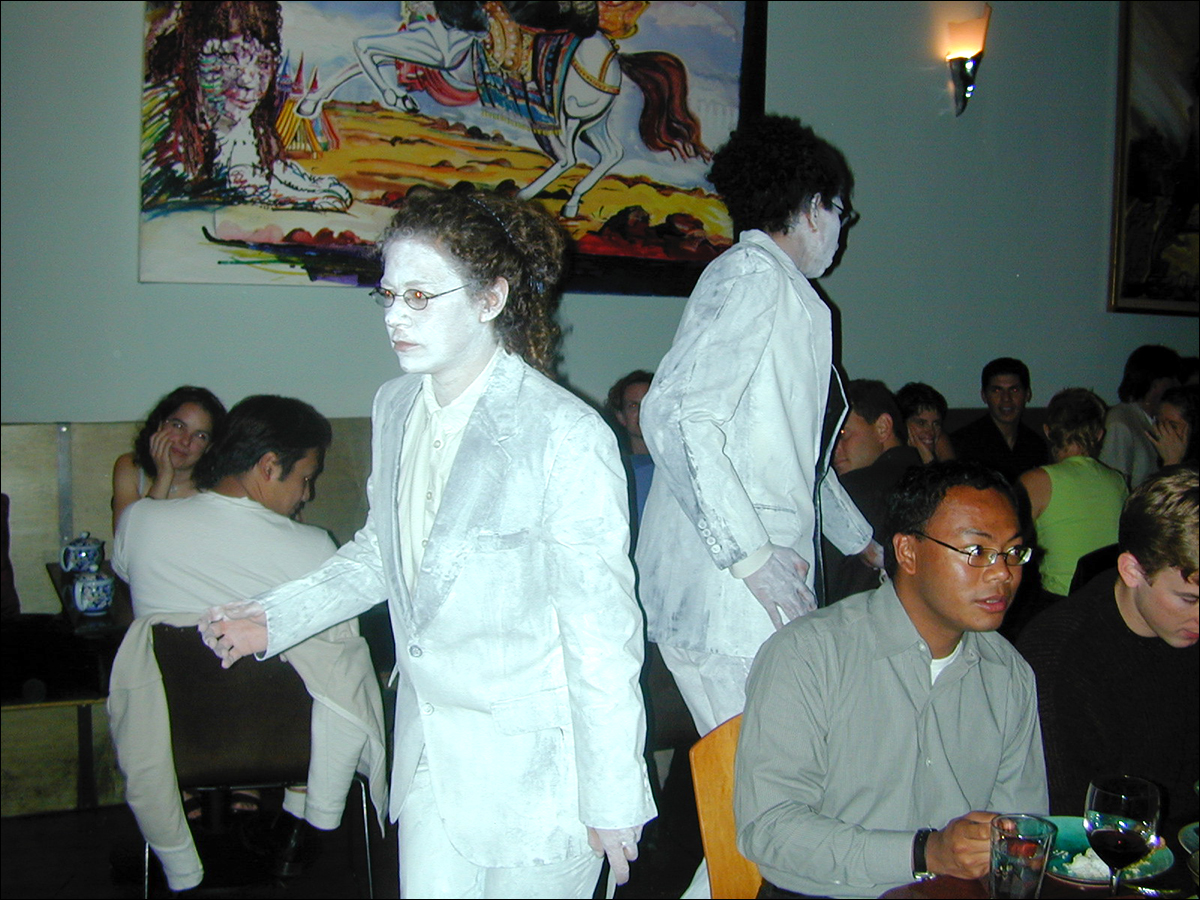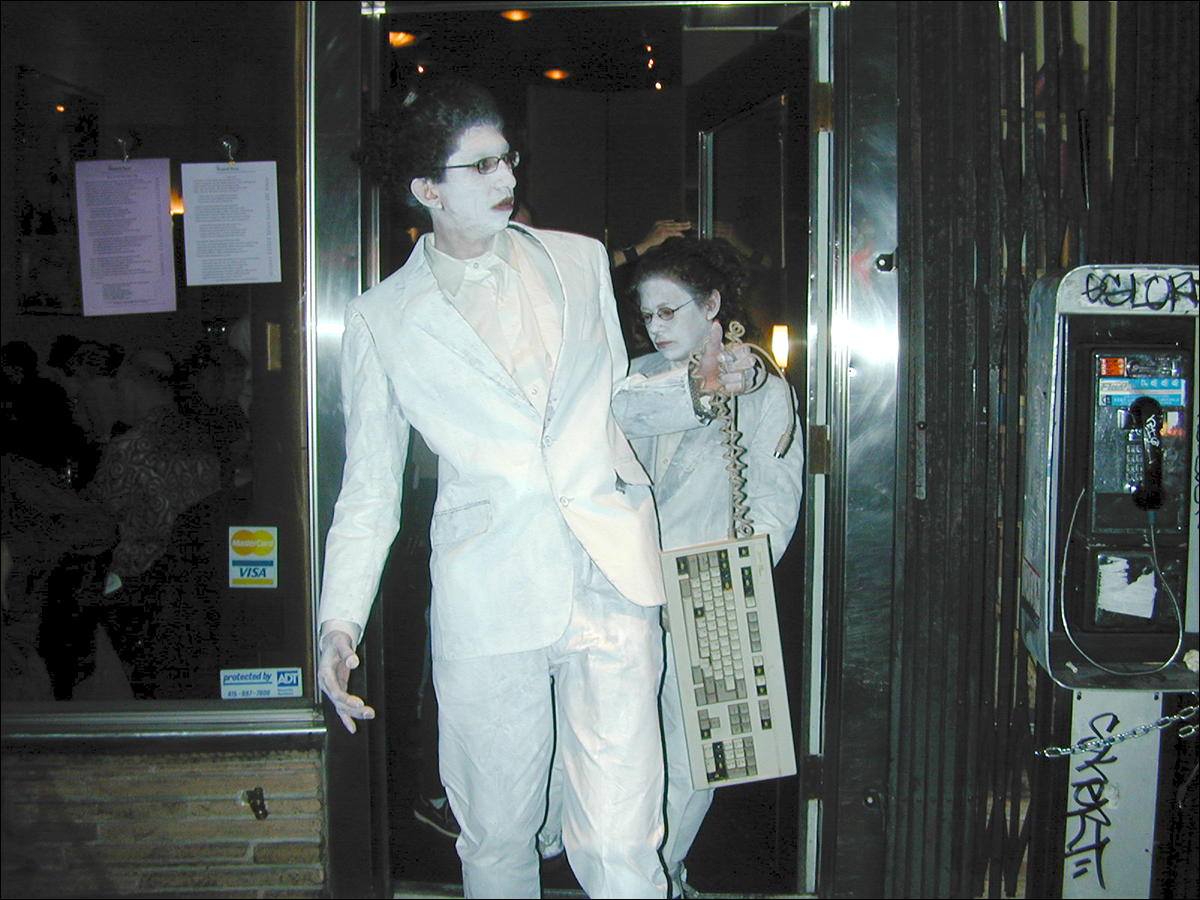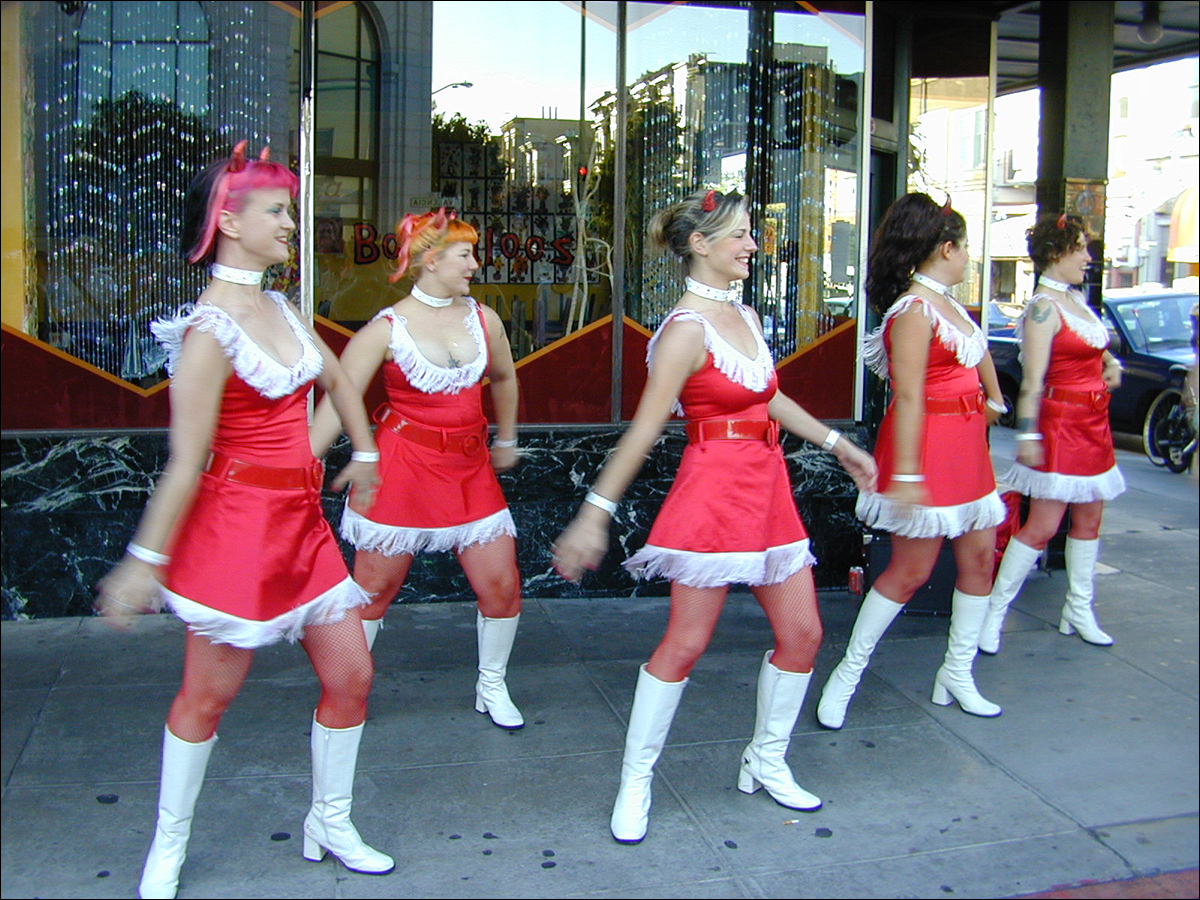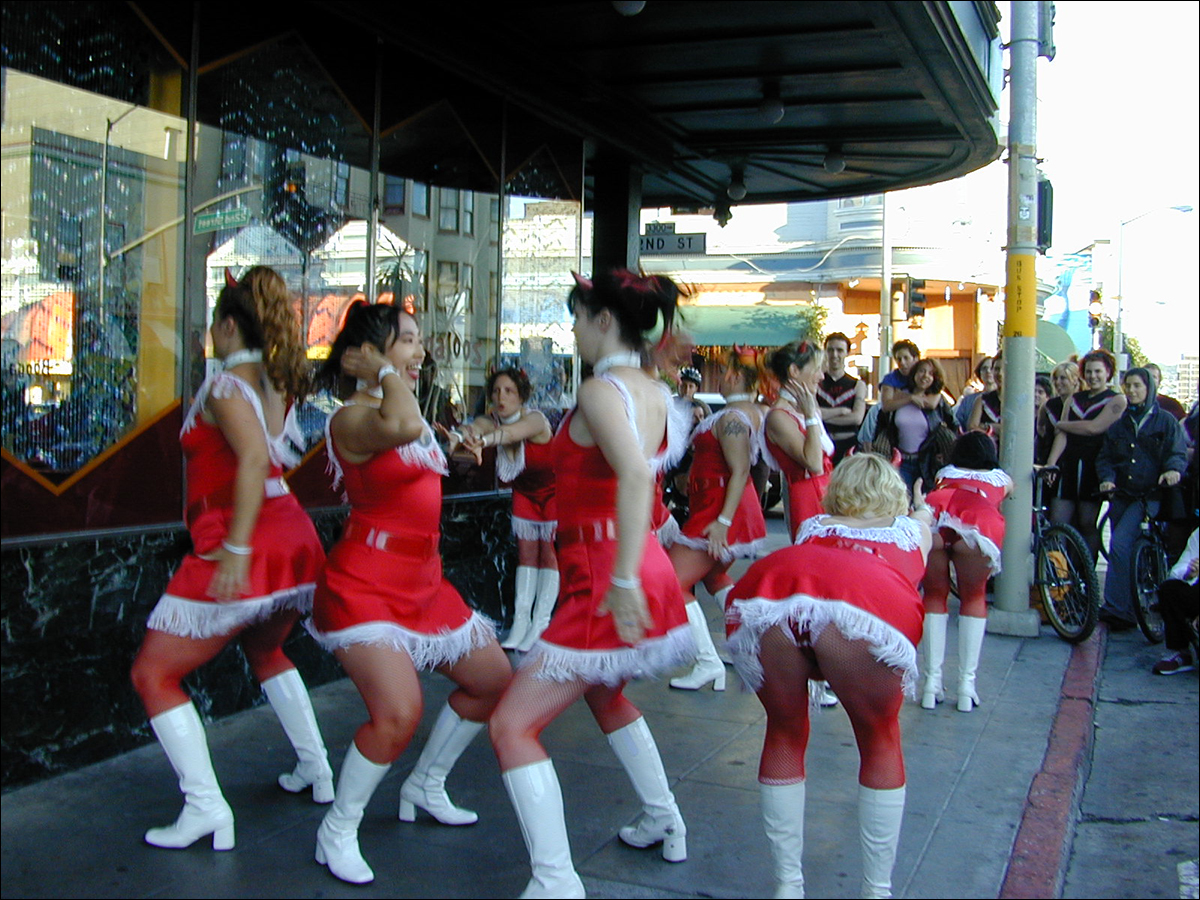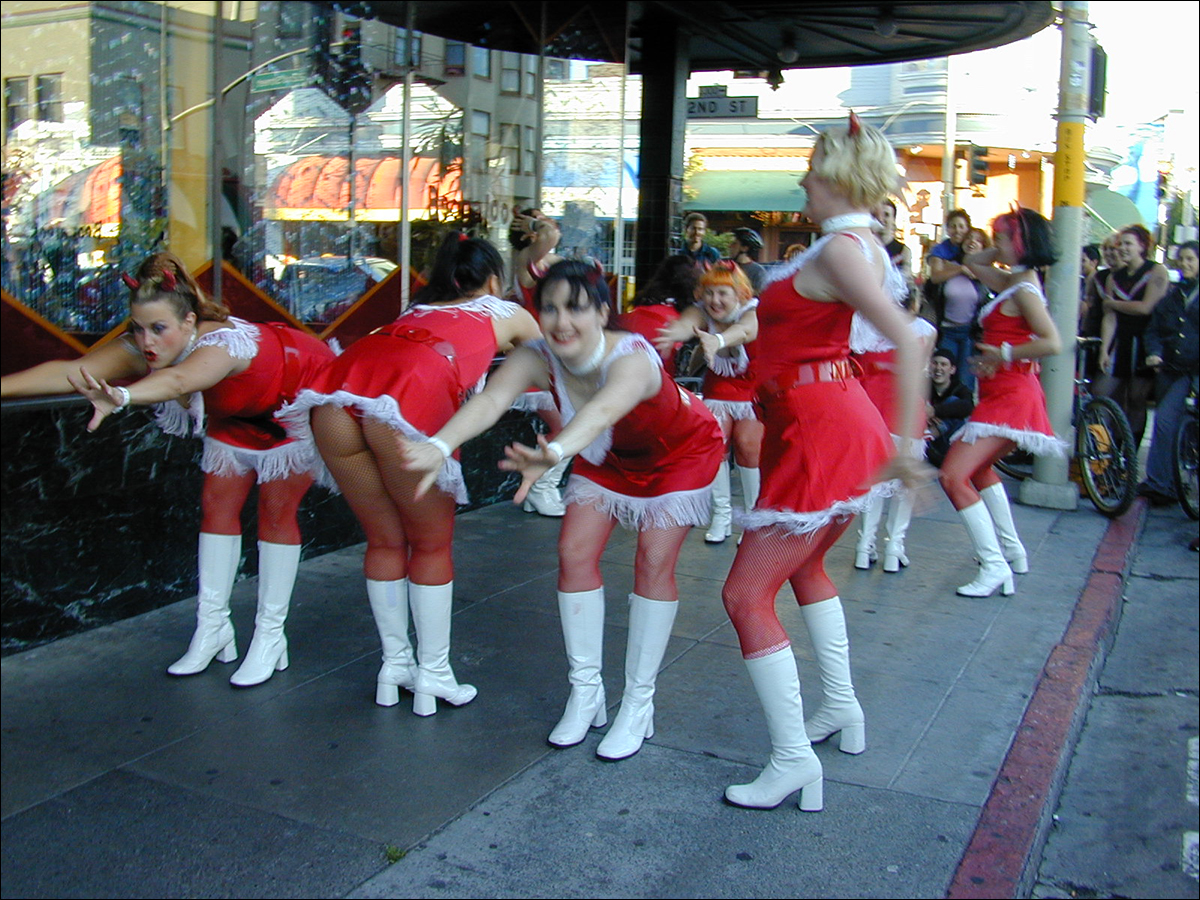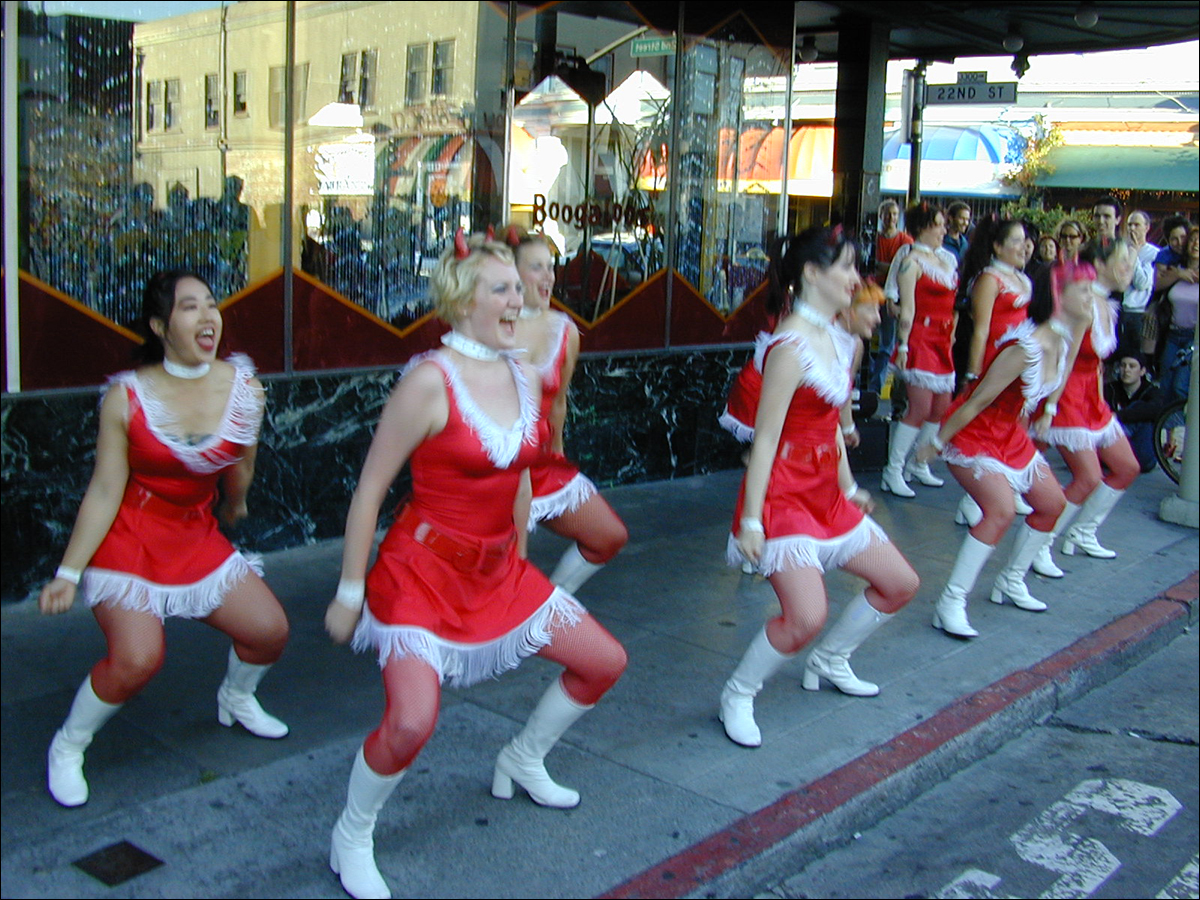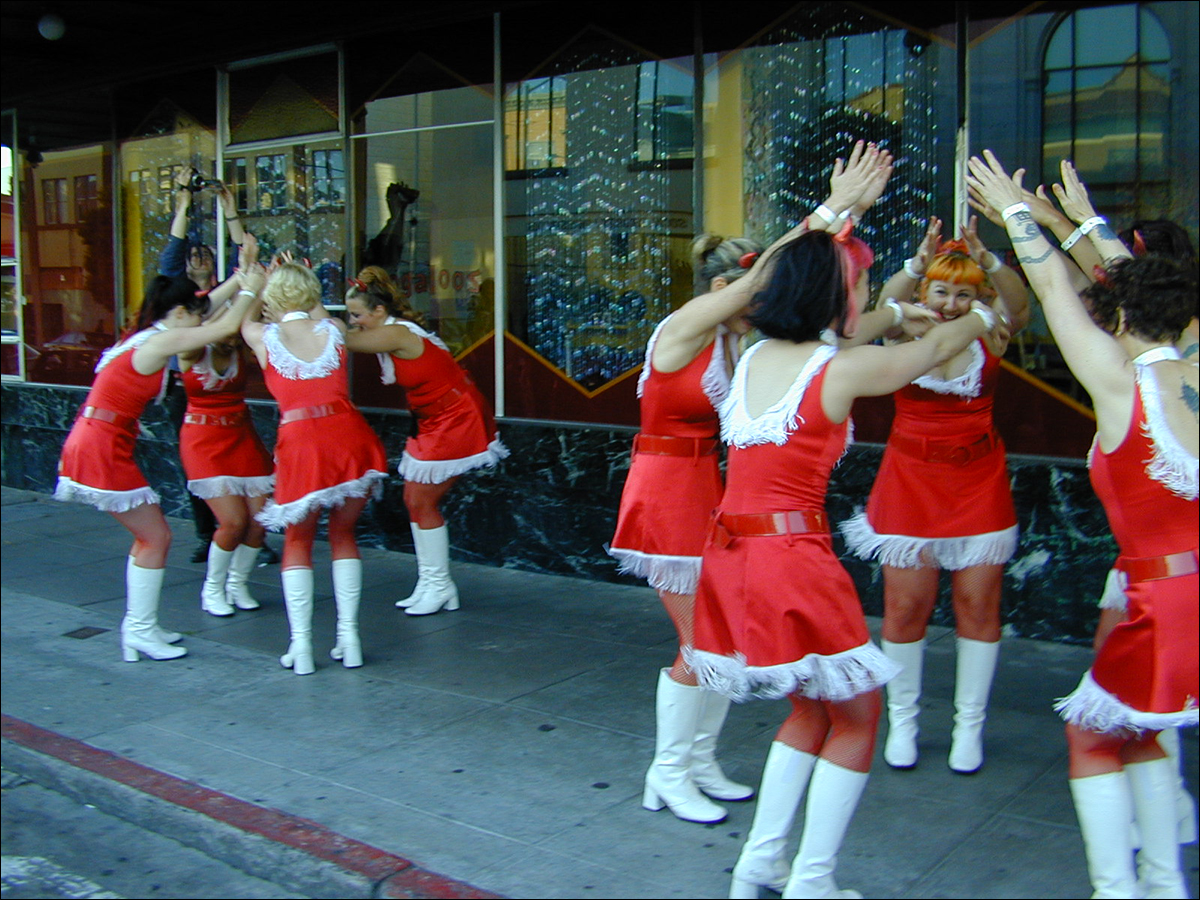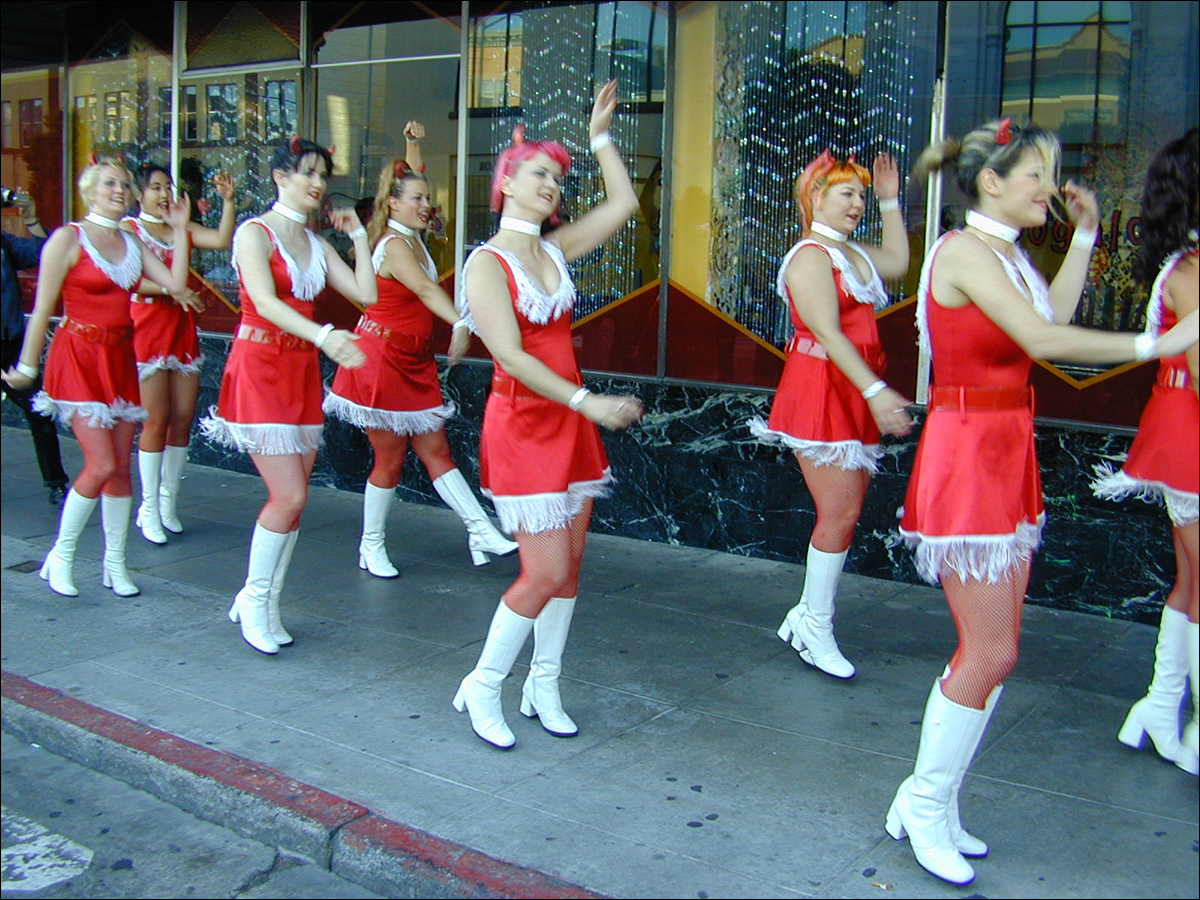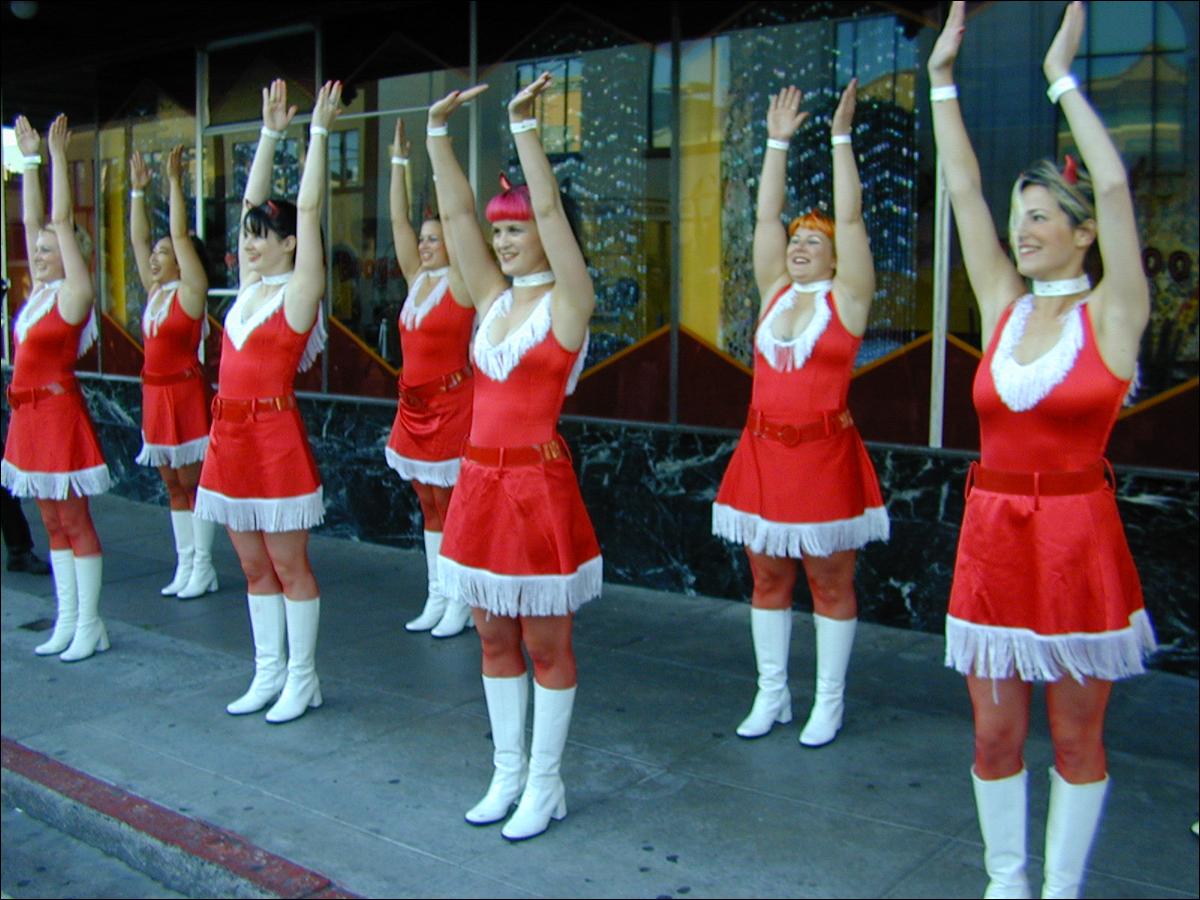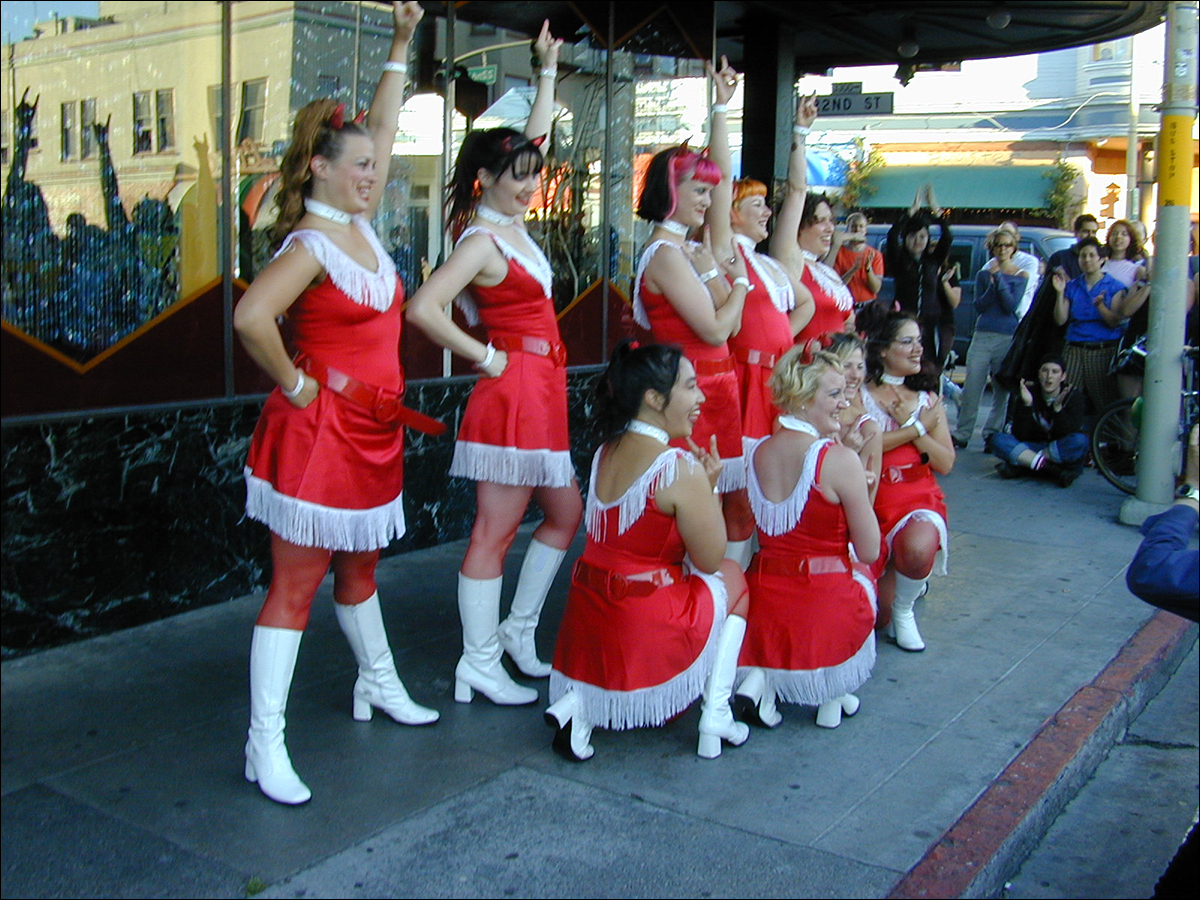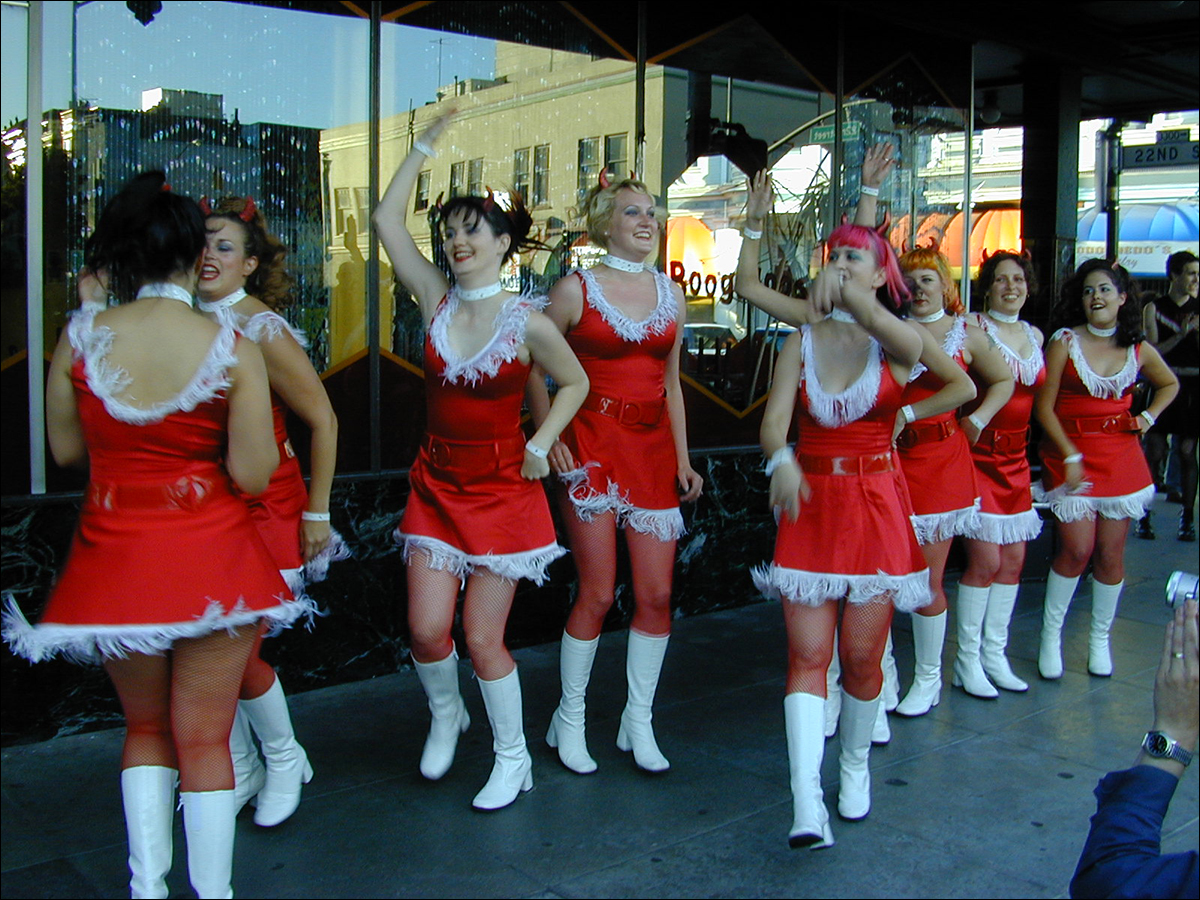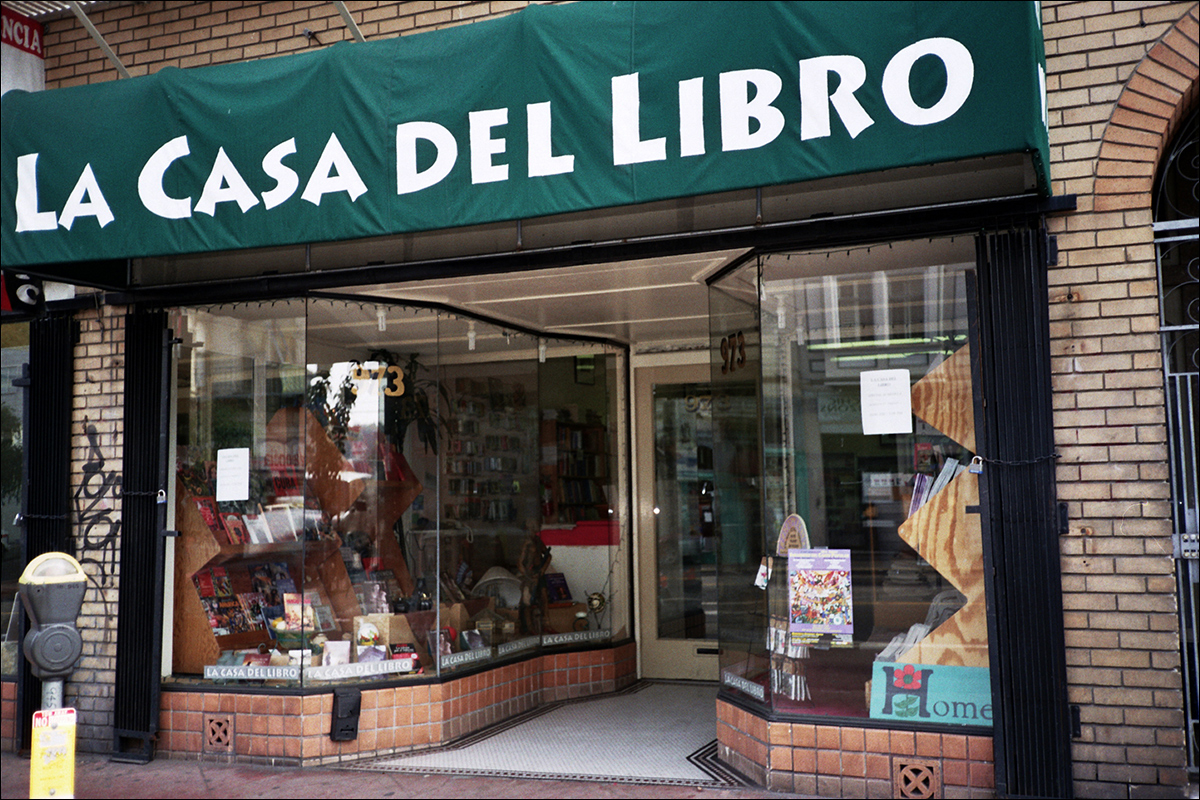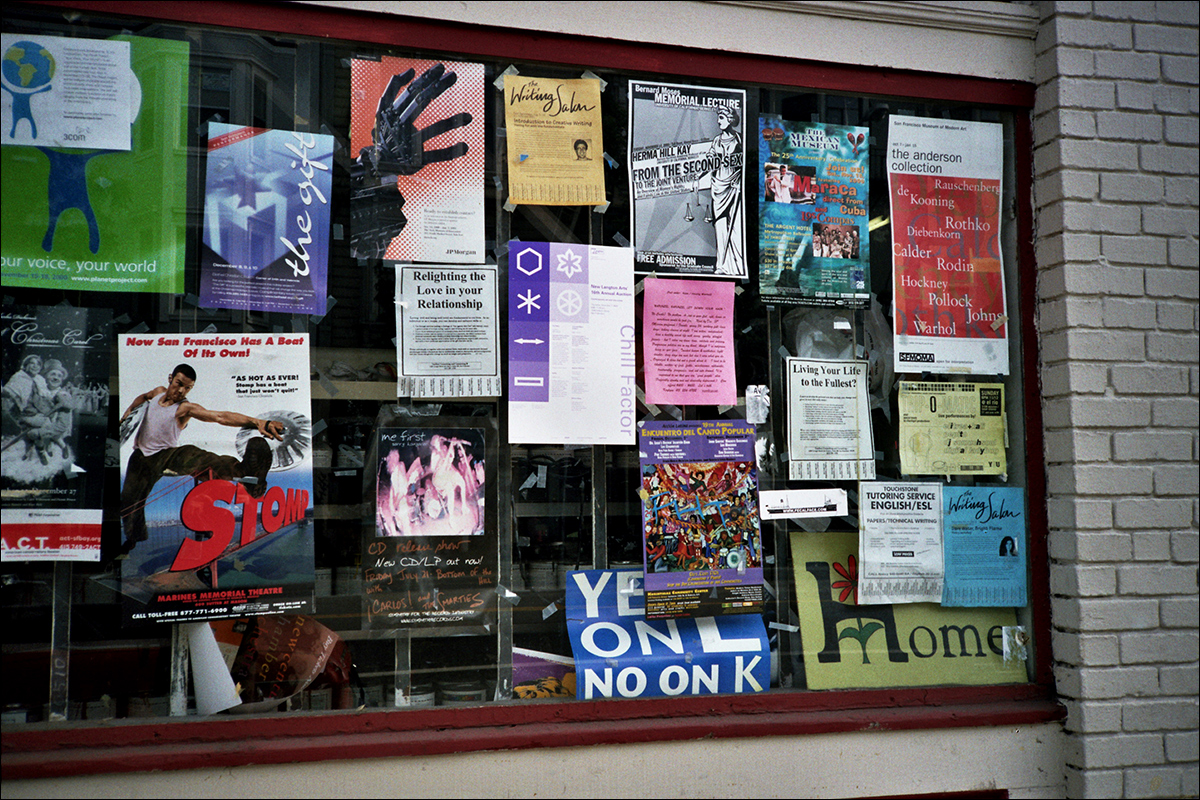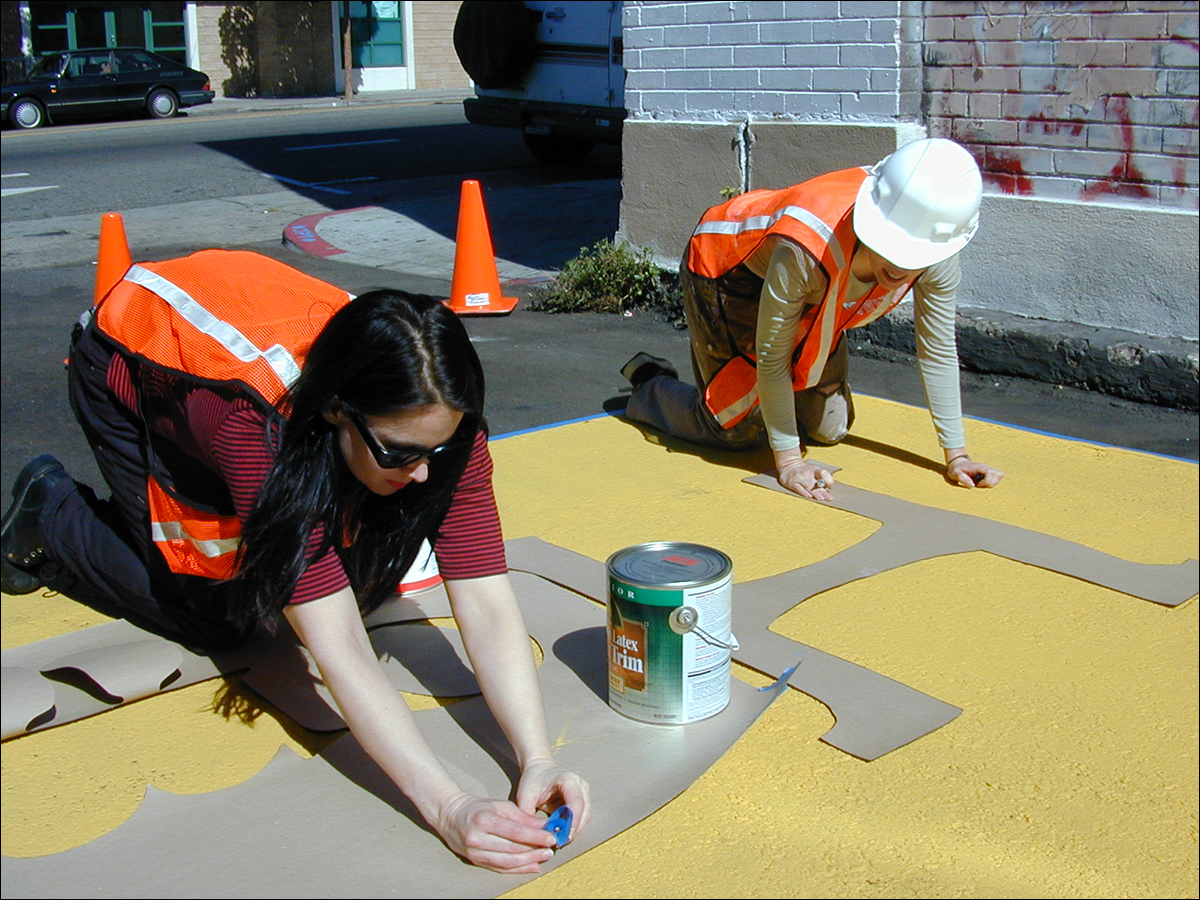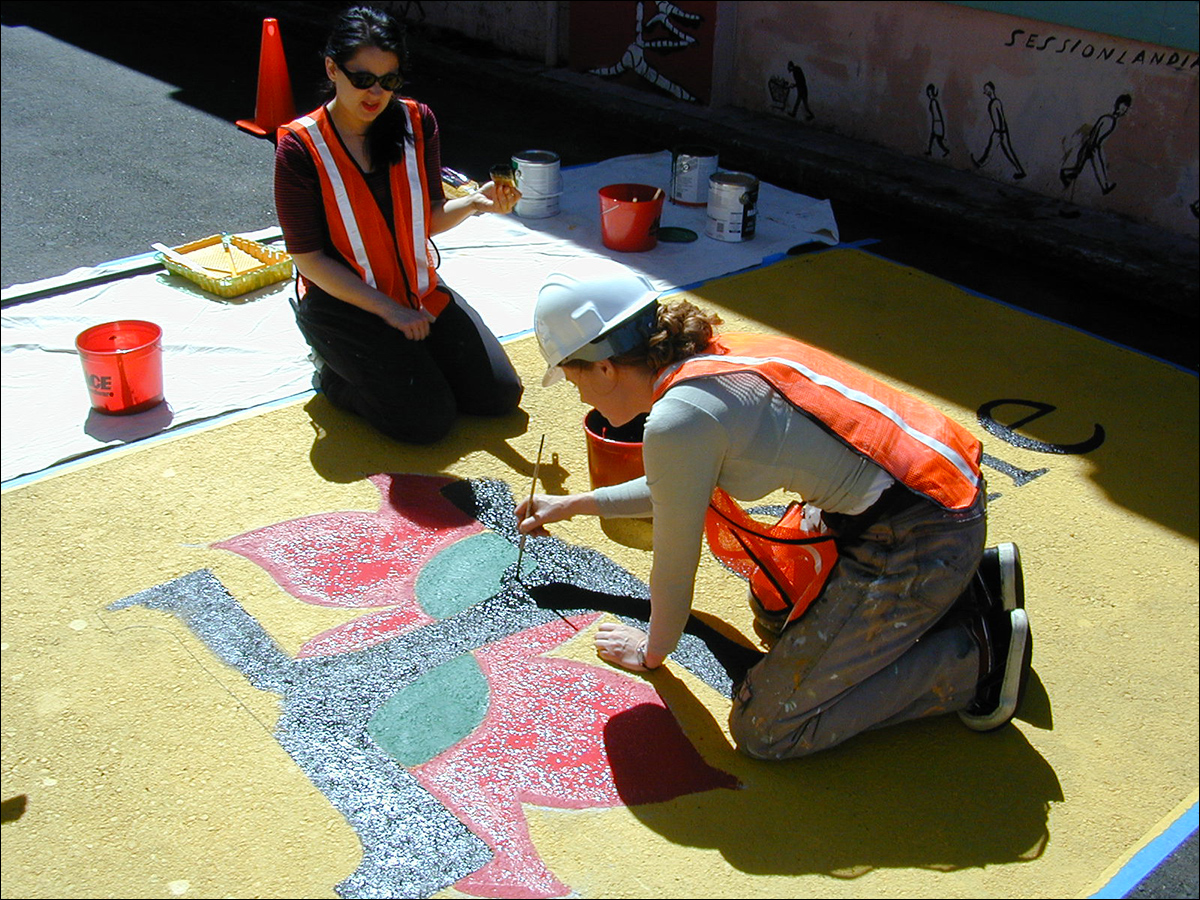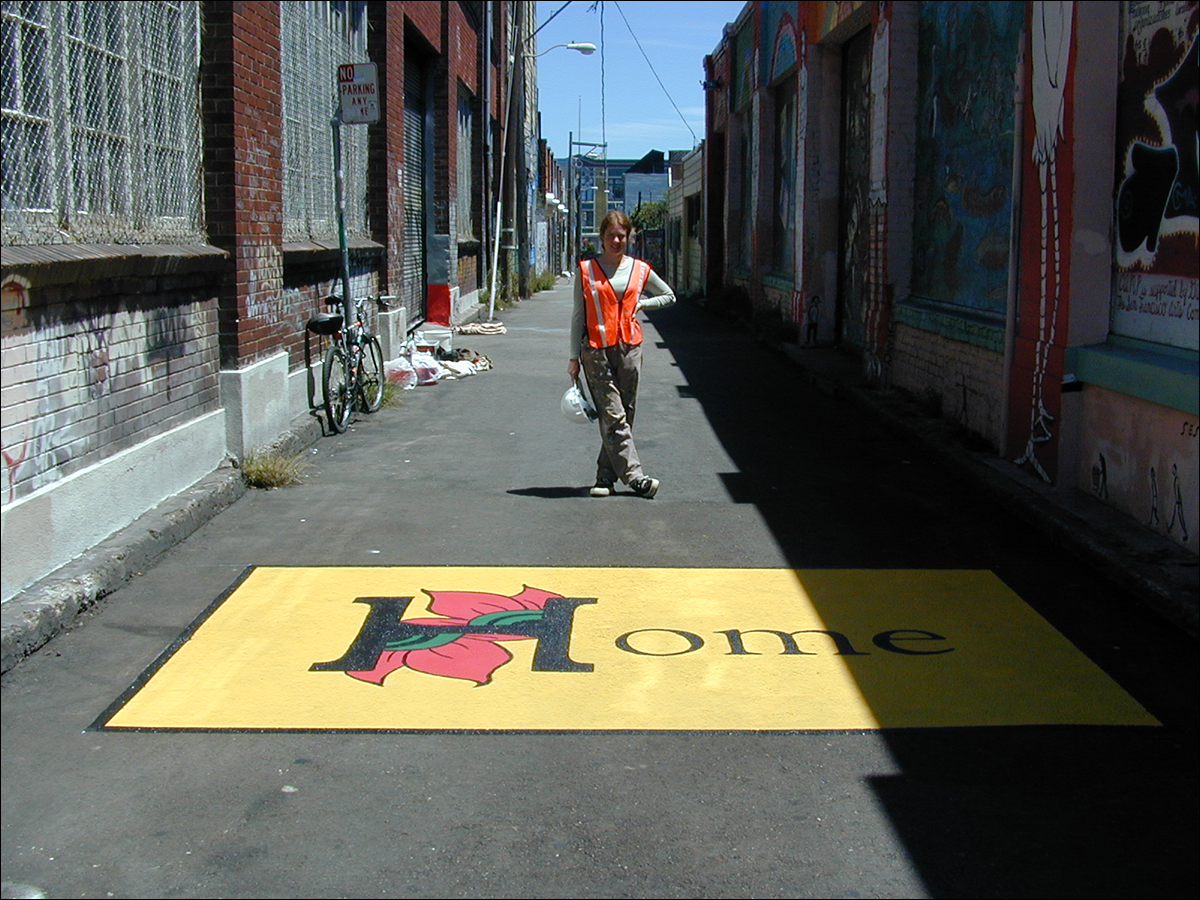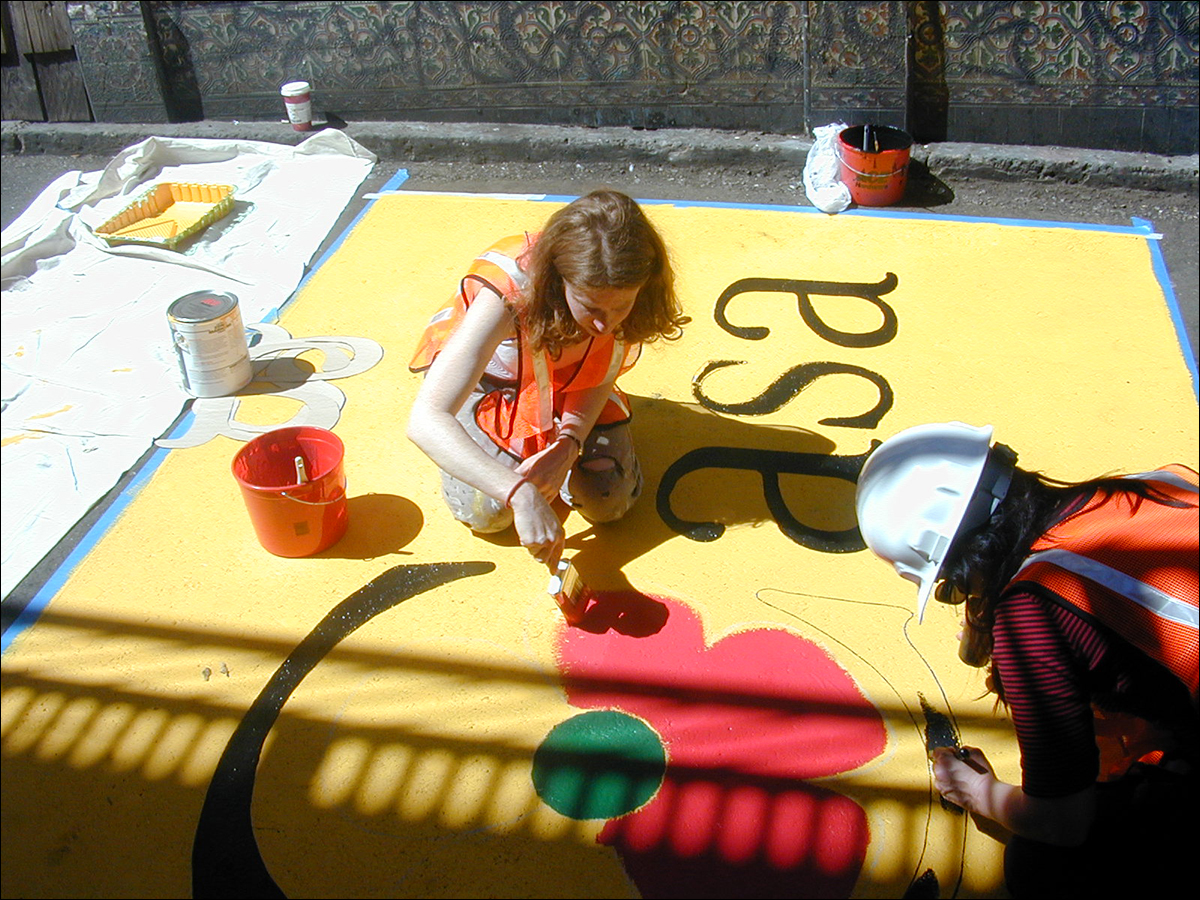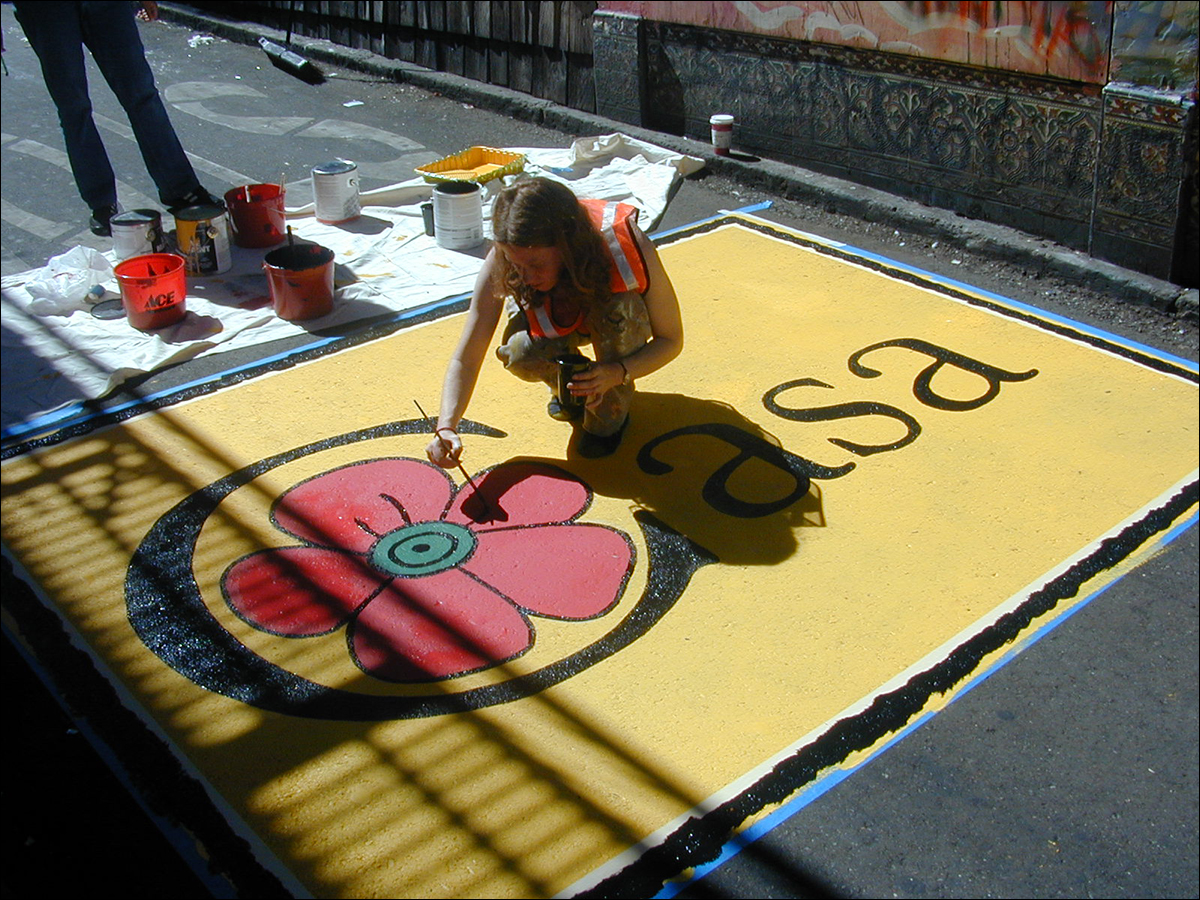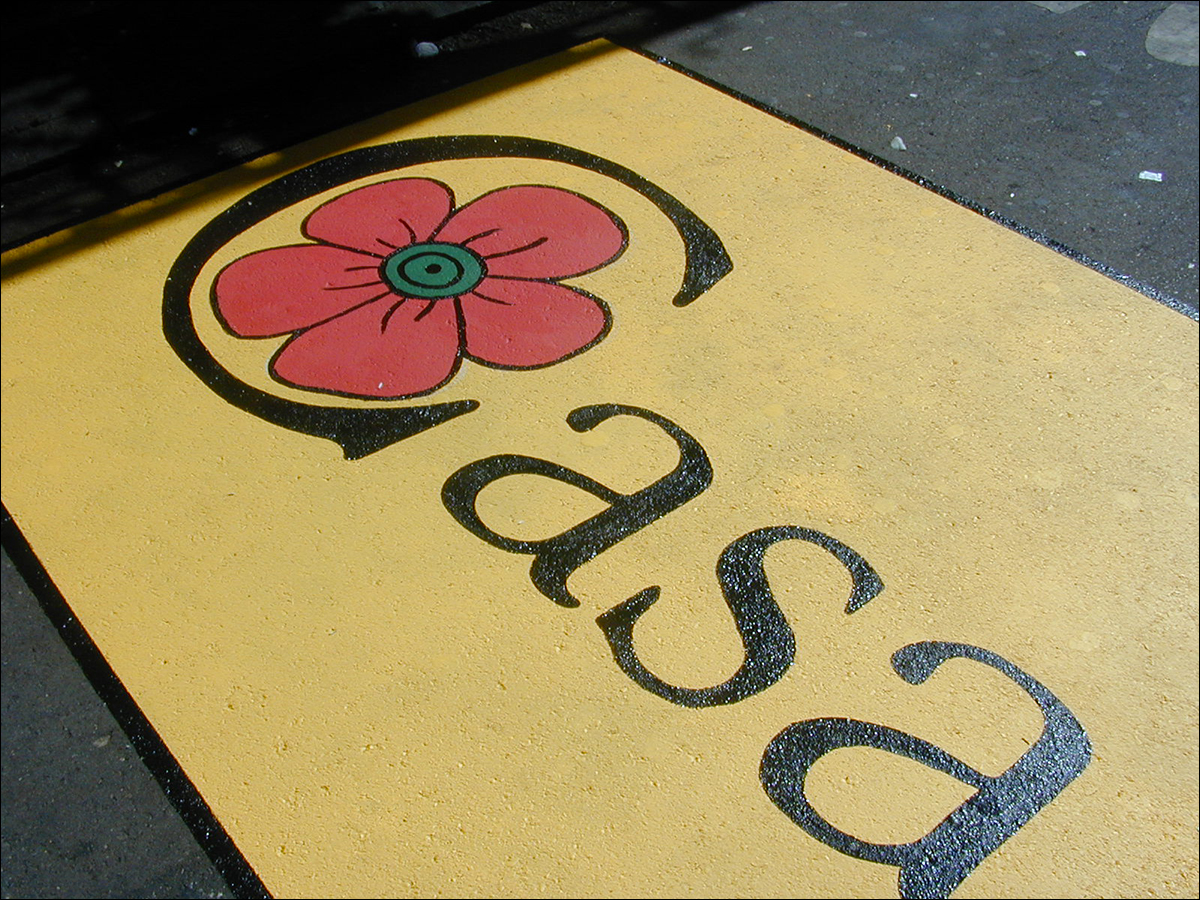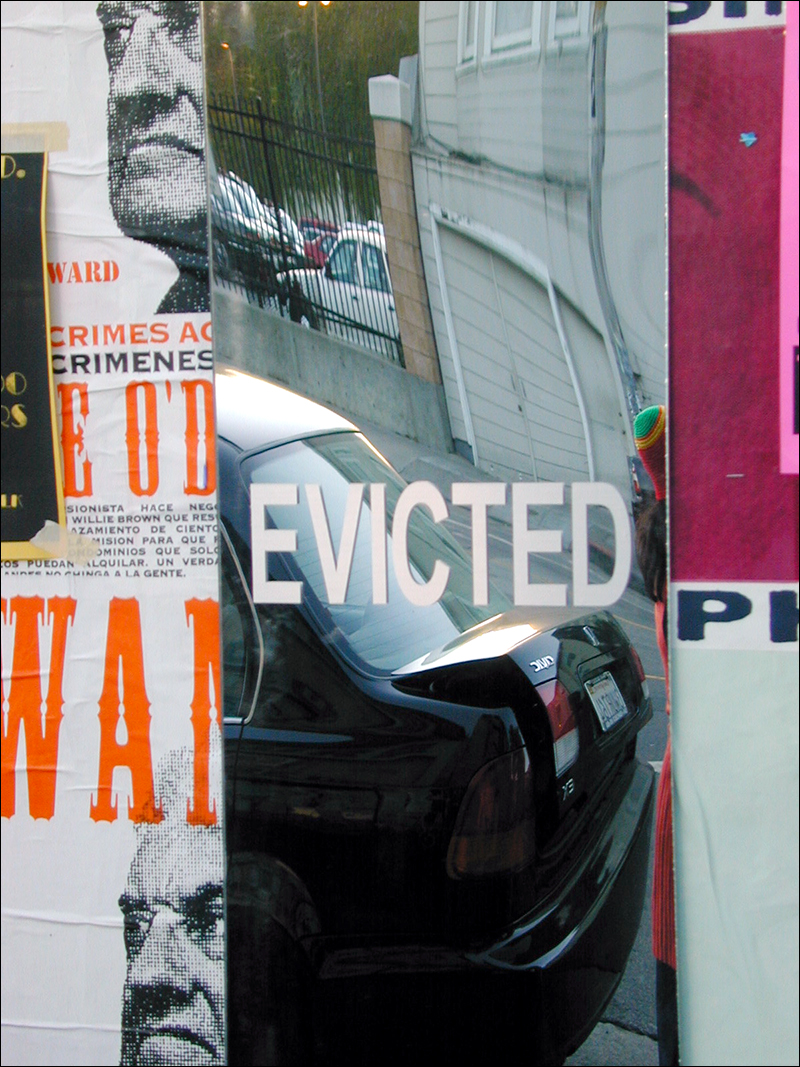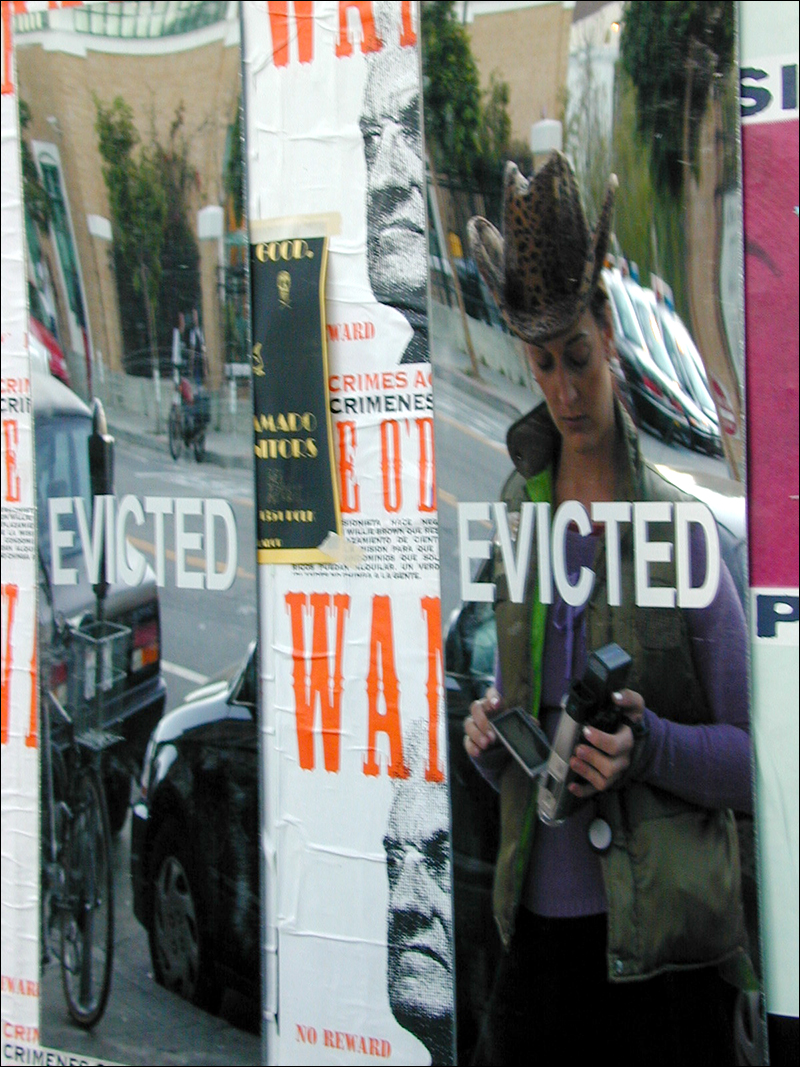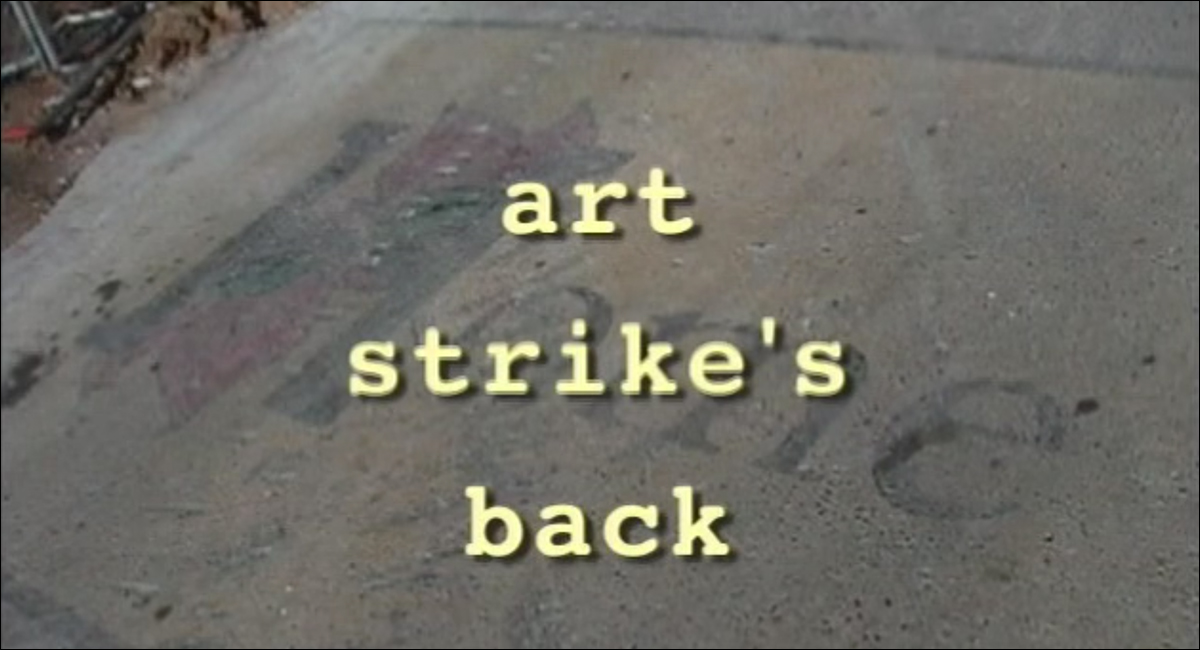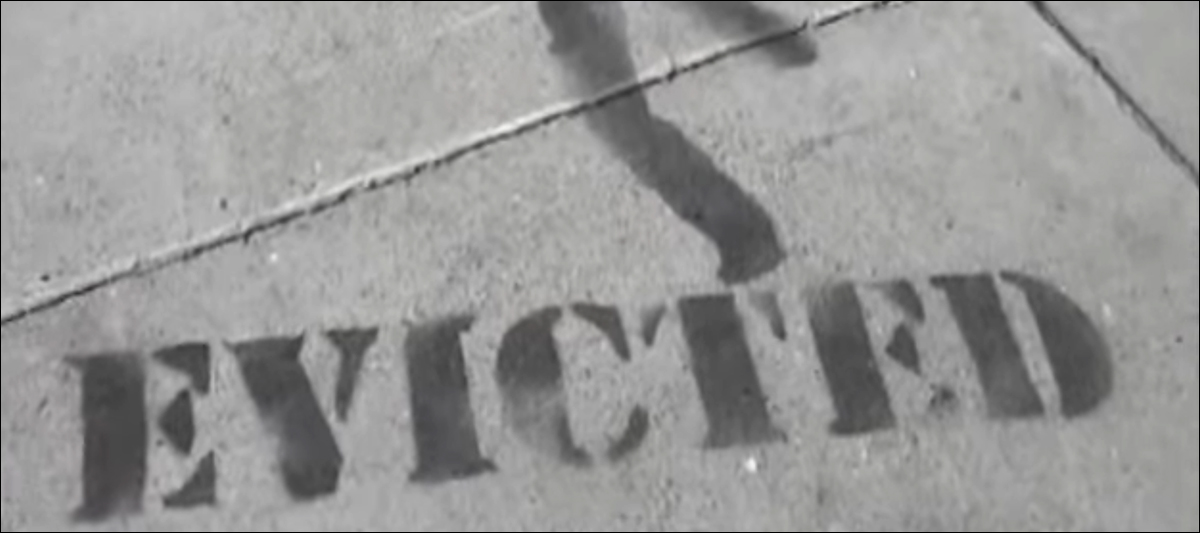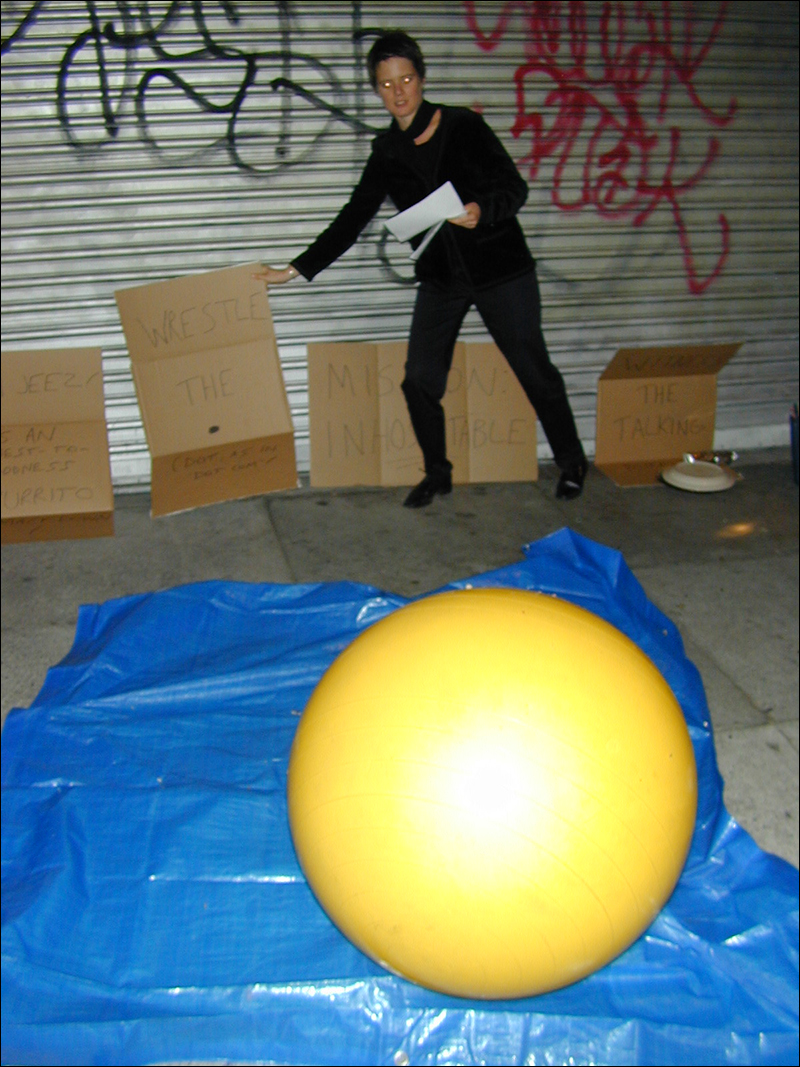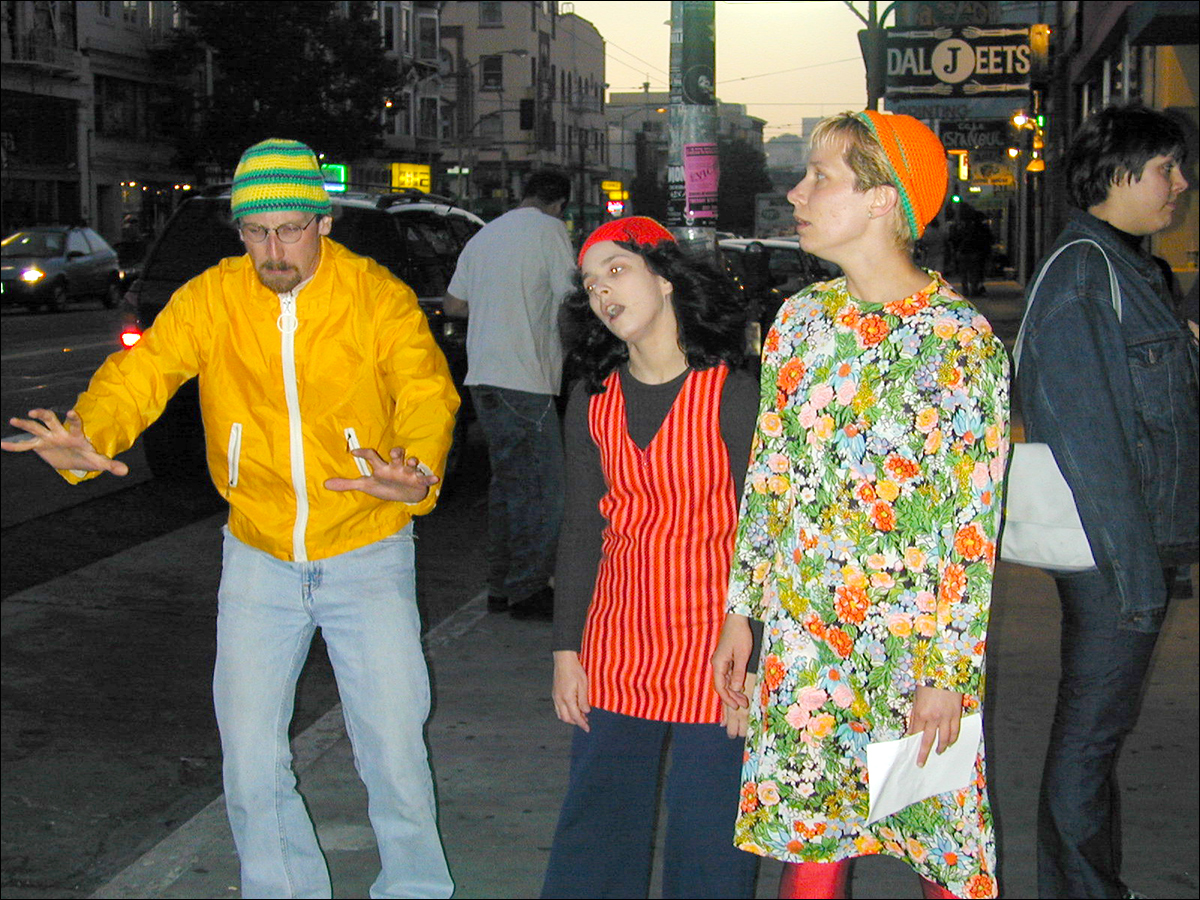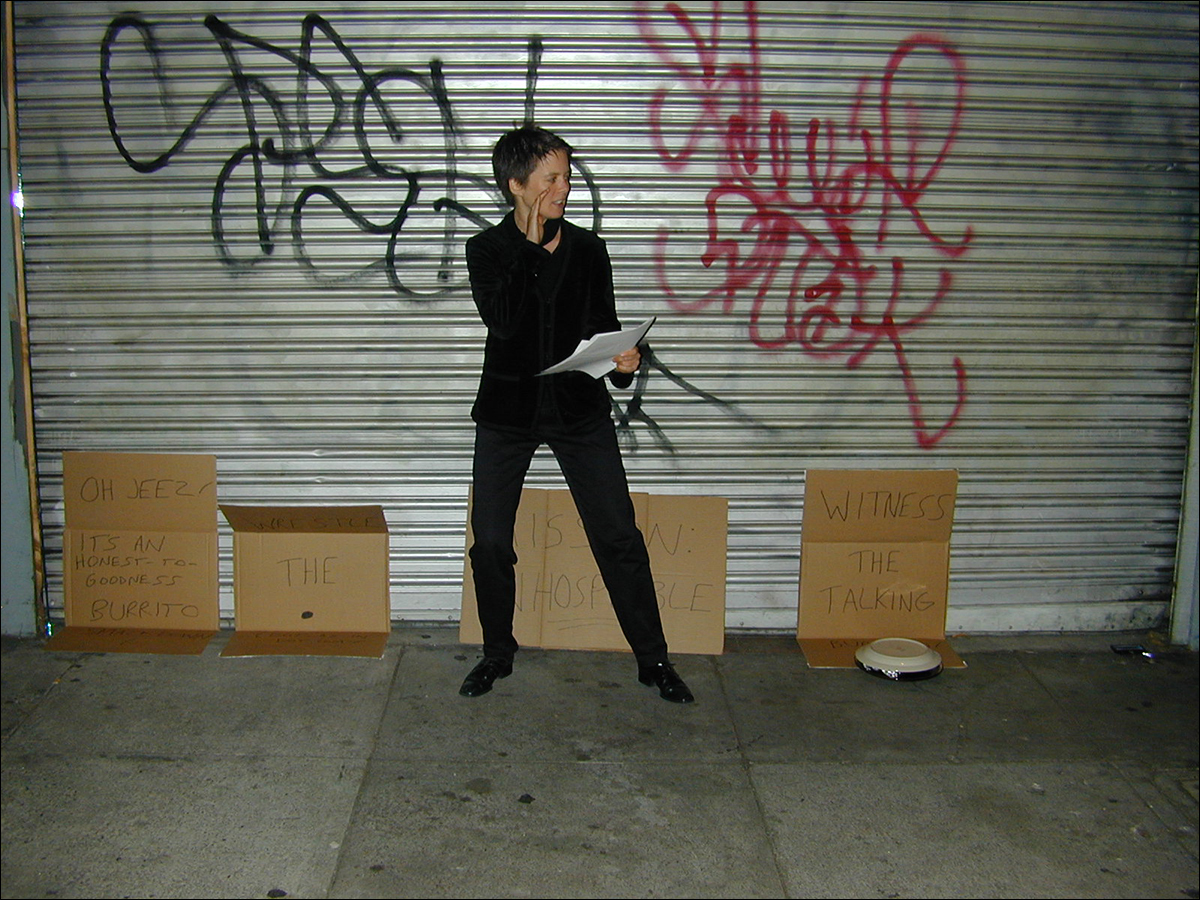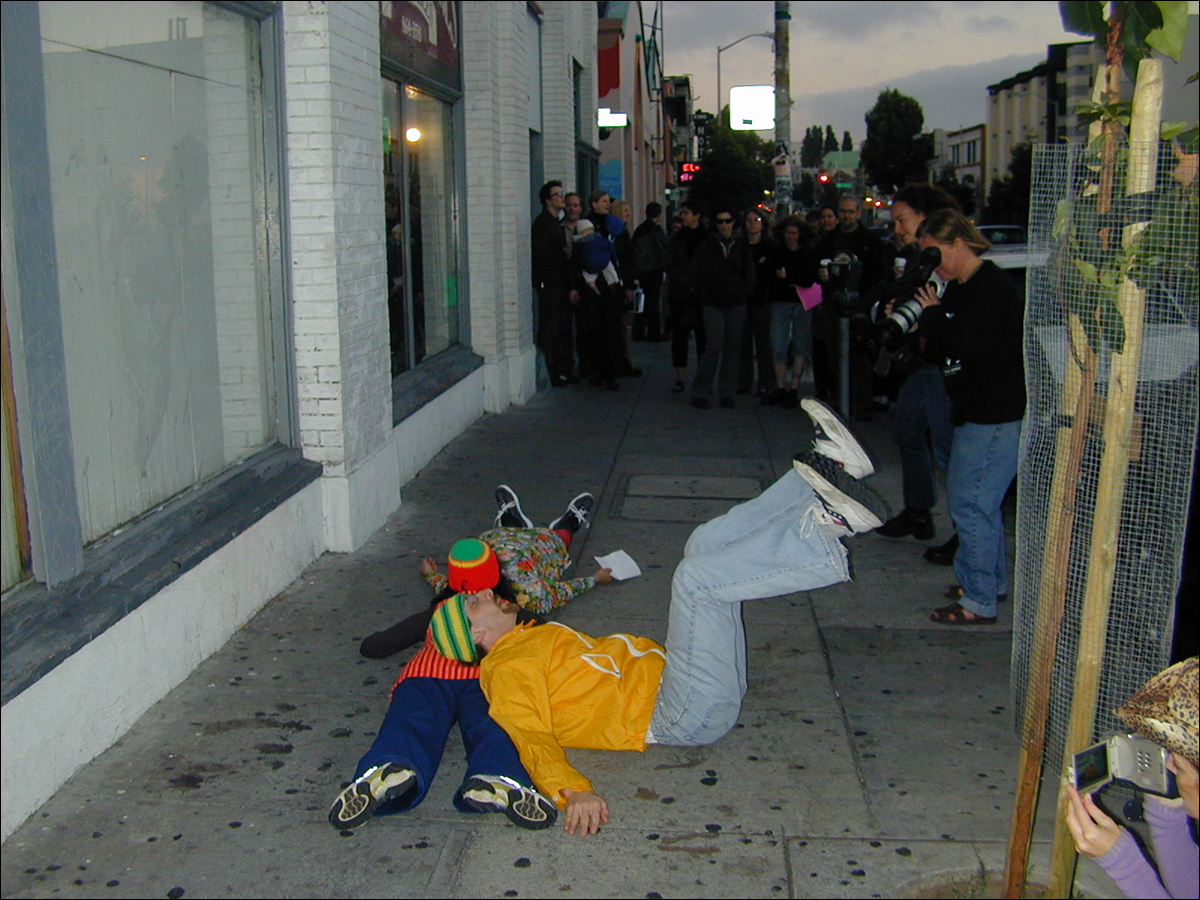Art Strike’s Back
Art Strike's Back was one response to the unprecedented and unrestricted level of gentrification and displacement that we experienced in San Francisco during the "dotcom boom", impacting individual residents, small businesses, and non-profit organizations.
Art Strike’s Back, performance series organized by Megan Wilson, Lise Swenson, Tim Costigan, San Francisco that included over 70 artists, 2000
Participating Artists included:
Angela Bauch, Art Cheerleaders, Eugenio Brodbeck, Tanya Calamoneri, Francine Cavanaugh, Shelly Cook, Jaime Cortez, Lisi DeHaas, Krista DeNio, Devil-Ettes, Kate Ellis, Leigh Evans, Jennifer Fong, Carla Kihlstedt, Nils Frykdahl, Suzanne Gallo, Rene Garcia, Karen Garman, Susan Gray, Martha Gorzcki, Tsering Gurung, Russell H., Kinji Hayashi, Keith Hennessy, Marin Sander Holzman, Jeff Hull, Lissa Ivy, Rachel Kaplan, Marci Klane, Keith Knight, John Leaños, Shinichi Momo Koga, Joshua Kohl, Joe Kreiter, Travis Leland, Angela Leonino, Aerlia MacLaird, Mano Gen. Z, Susan Maxwell, Dawn McCarthy, Marni McMurdy, Liz Miller, Haruko Nishimura, Michael Olexo, Lisa Marie Patzer, Gerardo Perez, Monica Praba Pilar, Dan Rathbun, Laurence Roberts, Heather Rogers, Sue Roginski, Val Russell, David Sarpal, Sonny Smith, Moe Staiano, Lise Swenson, Cassie Terman, Gabrielle Thormann, Megan Wilson, Gordon Winiemko, Winter, Joyce Ycasas, Kezia Zichichi.
Art Strike's Back was an 8-week series of performances (began as 6-weeks and due to demand extended to 8 weeks) that took place between July and August 2000. Events included a site-specific mourning/protest dance for the rapid fire of displacements and evictions in the Mission; an action to hand out 250 signs reading the single word "Home"; a souped-up, revved-up, amped-up low-rider style Camaro charging through a wall of toilet paper that streamed through the air and provided a convenient source for personal hygiene on the street; a tour examining one city block that addressed the state of repression, and urban space, the arts and the art of profiteering, and the political ecology of fire in urban America; a Homeless teacher, asking people she encountered on the street who appeared to be benefiting from the New Economy if they would house her; a grief walk; spoken word queer rants; naked "dot comers" tied together and scurrying frenetically through the street as they discussed their IPO's, stock options, where they're going for dinner, their SUV's and Extreme sports ie. The young emperors have no clothes; a 14-woman synchronized dance troupe who aren't too cool to monkey, jerk and watusi their butts off; a missing person's campaign, searching for those who have been displaced; site-specific performances examining the way that the current dot-com phenomena and its resulting boom economy make assumptions about space and entitlement; the unveiling of the "last Mexican found in the Mission;" a rash of eviction notices served by Evictor to reclaim the Mission's precious space; posters advertising "Black People For Rent" to meet the comfort zone quota for diversity at DCP's (Dot Com Parties); and several new murals in Clarion Alley that ask viewers to consider the changing face and culture of the neighborhood.
“The Emperor Has No Clothes” by Lise Swenson:
Friday, August 11, 2000, 9pm
Valencia Street bt. 21st & 19th streets
A group of naked or scantily clothed dot-comers tied together by a web of 3 to 5 foot length ropes with cell phones in their hands as they hurriedly scurry up and down Valencia Street talking about their IPO's , stock options, where they are going for dinner, their SUV's and extreme sports. Very simply the young emperors have no clothes.
“Homeless Teacher” by Angela Leonino
Friday, August 4, 2000, 7pm
Valencia Street bt. 16th & 17th streets
Angela Leonino confronted people on Valencia Street and asked them to house her as they walk down the street – targeting people who appeared to be ‘dotcommers’.
Tsering Gurung and Joyce Ycasas
Saturday, July 22, 2000, 9pm
Valencia Street between 16th & 20th streets
The artists handed out oranges with writings promoting kindness, urging evaluation of one’s life priorities, and expressive of hope, to passersby on Valencia Street. As they handed out each orange, they read the words on it to the recipient.
The Art Cheerleaders
Saturday, August 12, 2000, 7pm
Valencia Street bt 20th & 21st streets
“Cochroach” by Shinichi Koga/ Inkboat:
“Portals” by Rene Garcia and Marci Klane:
Saturday, July 22, 2000, 8pm
Valencia Street bt. 16th & 17th streets
Rene Garcia and Marci Klane explored the conflictual attraction and repulsion of the dot.com industry through performance with a work titled "Portals". The piece raised questions of what must be relinquished on both a personal and collective level in order to access "the power of information". Through the use of pseudo-butoh the artists challenged the notion that time is money and speed is profit by slowing down physical action. "Portals" countered the illusion of speed, direction, and destination in this technologically inundated age by investigating the gravitational pull of the internet and who will be invited through its portals and who will be left behind.
Devil-Ettes
Saturday, August 12, 2000, 7pm
Valencia Street bt 20th & 21st streets
“Better Homes & Gardens” - “Home/Casa” by Megan Wilson
July, 2000 (handing out signs), Mission District
Sunday, July 23, 2000, 9am - 6pm (murals), Clarion Alley
Megan Wilson created 250 signs, all with the single word Home hand-painted in black against a color background. Within the “H” of each sign a flower has been painted. The signs are painted on ¼” plywood and range in size from 12”x18” to 16”x30”. The signs were distributed in San Francisco’s Mission District to those living on the streets (who wanted to participate) to use as markers of their homes. In addition, the signs were placed in the windows of buildings belonging to residents, organizations, businesses who were being evicted or in danger of being evicted. Wilson also painted large 7’x10’ signs at each entrance of Clarion Alley (between Mission and Valencia and 17th and 18th Streets) in the Mission District – one reading “Home” at the Valencia Street entrance and one reading “Casa” at the Mission Street entrance.
“Evicted” by Val F. Russell
Valencia Street
Art Strike’s Back Manifesto
In the late 1980's, a loose confederation of artists in London, Baltimore, Minneapolis, and San Francisco (among other far flung locales) proposed an Art Strike for three years, beginning in 1990. Each city’s Art Strike coordinators took different, and often contradictory, stances in regards to the purpose and meaning of the Art Strike, as well as to how to conduct one. In San Francisco the effort was coordinated out of the Valencia Street media gallery Artist's Television Access (ATA).
Most of the activities and statements surrounding the proposed Art Strike were predicated on the very absurdity and unlikelihood of such a thing actually occurring, hoping instead to draw attention to the cultural and economic conditions in which art was made, and distributed, at that time. One primary argument proposing the strike was that art making was an act of unwitting conspiracy with the prevailing forces of capital. As such it served as cover for the more profound gagging of every and all individuals' agency and creativity that the informational/industrial/financial multinationals were aggressively pursuing through worldwide monopolistic dominance of media, and the consequent control of the information and opinion available, both for expression and consumption. While tolerating supposedly challenging and critical art making as evidence of the plurality of opinions available in the supposedly 'free' market, the dominating corporate media owners could use such tolerance as a tool to further gain control of the processes and outlets of expression. The Art Strike was, according to the argument, intended to cast a light on this ill understood conspiracy by threatening to cease creating the cover behind which this cultural totalitarianism was operating.
Ridiculous or not at the time, ten years later the Art Strike now seems a strangely prophetic gesture, the absurdity of which is fast becoming a material reality in the city of San Francisco, and perhaps foretelling the future of art-making everywhere. The city of SF now faces a de-facto art strike, or perhaps better formulated, Art Lock-Out. The problem is not as simple as rising rents, though that is proving to be a fatal symptom. The new digital dot-com culture, unforeseen and unanticipated a scant ten years ago, has effectively usurped the role of art making in the new information age. Though not even particularly covert, the web, and all those who reside within it, has taken upon itself the role of the 'free thinking, creative, rule shattering outsider', which by it's very nature challenges and alters the 'dominant paradigm' wherever it encounters it. This role provides even more effective cover for the voracious capture and consolidation of all media production and portals, because a member of the family is acting it out, as it were. It is difficult to believe that a child is entirely the agent of a parent that is constantly ridiculed and challenged by that child. However, such is the case with the new information order. In fact, the dot-com-ers obvious and rather pathetic relation to capital and acquisition points this fact up rather plainly. All that obstreperous creativity seems to be in the service of an even more malevolent acquisitiveness than that of the 'parent'. Somehow, though, the new digital dot-com thinkers fail to observe this conundrum in their own self-absorbed critiques and challenges to the old 'dominant paradigm'.
We are in the eye of one of the most intense and thorough-going storms of acquisition and consolidation of wealth and power in history, one that is leaving a larger share of humanity out of it's benefits while expanding it's exploitive capabilities over them, and is able, at the very same moment, to tell the world with a straight face that it is about empowerment for all! The supposed unwitting co-conspirator artists of the original Art Strike critique ten years ago seem ineffectual and useless by comparison. And so they are, to the dot-com culture. As a result, there is no urge or need felt to assist, or even tolerate, art making in 'their' acquired environment. Artists and art organizations are subject to the same rigors of the market place as the dot-com-ers, and inevitably lose and are forced out. Further, by usurping the role of the alternative, the digital paradigm seeks to own the very conditions of experience (sadly, not just metaphorically!) by eliminating all portals of experience outside of it's control, other than the immediate lived experience, and by coaxing younger and younger children to avoid even lived experience as much as possible. The result is a completely commodified condition available for experience. The issue of what information and opinion is available becomes moot in such a world -it is as if everyone is given a white piece of paper and a white crayon, and are told that they are free to write whatever they please, and are further free to read, and believe, whatever anyone else has written! It is a cultural slavery of digital literacy with many perceived, but no real, alternatives. One of the cultural smokescreens that is used to hide this usurpation is the celebration and support of the 'civic art institutions' by the digital elite. By pointing to the increased adventurism of mainstream institutions, and their growing popular support, they argue that art making is alive and well in San Francisco. Unfortunately, this is a classic conflation of cause and effect. For an increasing lack of actual art making in this city, which is directly the result of the economic conditions created by the frenzy of acquisition, the powers that be point to the institutions that behave most acquisitively as the evidence of the dynamic's non-existence. There is no denying that art, even great art, exists in these institutions, but for a lack of context that healthy on-going art making provides in a community, those works are in grave danger of becoming meaningless. The institutions are increasingly becoming acquisitive archives of texts written in a language no longer spoken. No matter their original vitality, they become archaic and meaningless under such conditions. Nothing happens without unforeseen consequences, however, and this dynamic, though suffuse with unseemly strength, proves that rule.
If art was indeed a dupe of capital at one time to a degree sufficient to call for an Art Strike, then it is now without question a true outsider, and though difficult and embattled a position as that may be, spiritually and materially, in San Francisco in the year 2000, it also affords those art-makers that are left a rare opportunity to truly fight for its' own, and humanist cultures', very survival.
ART STRIKE'S BACK!!!!!!!!!

